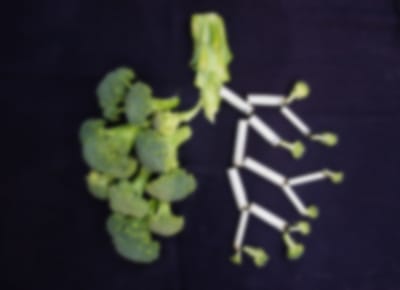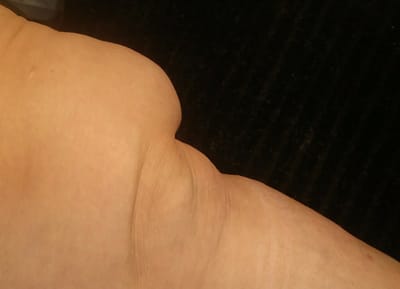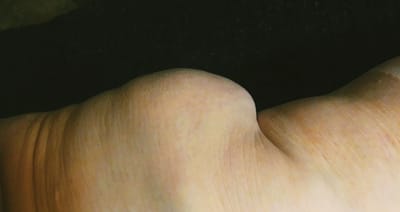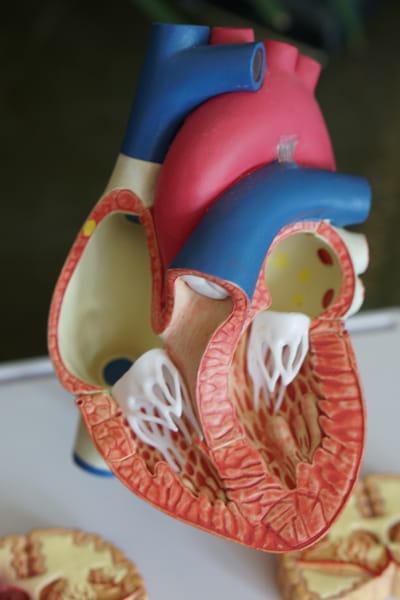Journal of Research and Experiential Medicine
Combining Research and Education
About JOREM
A part of JOREM's educational goal is greater respect for hpw the body handles nutrients.
Whatever is put into the body must be stored, excreted, or used. If it cannot be stored or excreted, then the body must prioritize other nutrients to use it up in a function preferably where much of the excess can be dealt with with a minimum of loss of other nutrients. Otherwise, damage will result.
This may explain a beneficial loss of sense of smell during coronavirus infection, because the sense of smell uses zinc, and the body has no designated zinc storage. People who can deplete other nutrients successfully at need so that the sense of smell can be used as ad hoc zinc storage seem to generally have a better defense against Coronavirus; this could explain why.
Low zinc, low magnesium and high iron may not show in standard serum testing, which suggests that the body wants the brain, heart, and other critical organs to get the proper nutrition. Mild deficiencies may become intracellular, or build less efficient chemicals (such as low vs high density fibrogen in magnesium deficiency), until more thrifty and efficient genes are located, and epigenes can be created. The body, unaware that a doctor is doing serum testing to find and fix these nutritional issues, may thus give misleading results in its efforts to keep itself running correctly under difficult circumstances.
A taste of current and future articles and links to others' research include:
Stem cells injected into the brain at Stanford treating strokes; a way to help patients, the economy, and a suffering medical system?
ACE as a treatment for Alzheimer's via direct application to amyloid plaque.
Cerumen (earwax) as a way of diagnosing cancer before it is visible in the body.
Original and proposed research:
Could cerumen testing find GHB?
One cause of fibromyalgia, for whom the cures located so far may be dangerous without medical monitoring.
Fatty lipomas, copper, and the cytokine theory.
Coronavirus diet and other low-level science "tweaks" - some yet which have not been tested, due to the focus on vaccines:
- A delivery system for an aerosol such as Lysol to be put in public restrooms and reduce the amount of Coronavirus from flushing of fecal matter, already available in a store near you.
- Could interferon be safely developed into a spray that could direct the immune to target the cells of the lungs of Coronavirus sufferers?
And much more, now and in the future.
All work here is ©Deborah Barges 2020 open access
Where this website has "©Deborah Barges" and "open access", it indicates that the article is an open access article distributed under the terms and conditions of the Creative Commons Attribution (CC BY) license (http://creativecommons.org/licenses/by/4.0/).

Treating Coronavirus-Induced Lymphopenia
Abstract:
Lymphopenia was the most common clinical laboratory finding in coronavirus patients. Folate deficiency is generally accepted as causing lymphopenia. People with the methylenetetrahydrofolic acid reductase (MTHFR) polymorphism, inability to convert folic acid to the form used at the cellular level, 5-methyltetrahydrofolate, are at a higher risk from Coronavirus. In the lab, providing 5-methyltetrahydrofolate brings these low activity cells up 10 times overs folate deficiency cells, whereas folic acid only brings normal activity cells up two and a half times. Under certain circumstances excess folic acid supplementation can mimic folate insufficiency; theoretically, folic acid could compete with dietary folate and natural folate supplementation. Therefore it might be useful not only to supplement with 5-methyltetrahydrofolate to reduce lymphopenia, but also to reduce or remove folic acid from the diets of patients suffering from lymphopenia, and any patient with coronavirus who has the methylenetetrahydrofolic acid reductase (MTHFR) polymorphism.
Hospitals are providing folic acid supplementation in the bread and other grain products, but may be completely unaware that they are giving folic acid as a nutritional supplement in the food.
Metformin is an incidental antiolate, which may be part of its benefits to coronavirus patients, since folic acid found unconverted in human blood may be competing with 5-methyltetrahydrofolate, and causing leukopenia. Since the elderly have been hit particularly hard by coronavirus and since pyridoxine has been found to be deficient in up to 50% of nursing home residents and also appears to improve folate recycling, testing could confirm if it also could benefit reducing lymphopenia with minimal side effects.
It is suggested to consider reducing folic acid to patients with coronavirus including folic acid supplementation in grain products in the diet in the hospital which are not considered to be nutritional supplements, and providing 5-methyltetrahydrofolate or other available natural forms of B9 two patients suffering lymphopenia with Coronavirus, and if it is found beneficial, possibly providing it to patients who might have subclinical lymphopenia with Coronavirus in the hopes of improving outcomes.
--
Background:
A cluster of pneumonia was reported in Wuhan, Hubei China for the first time in December of 2019[1]. A corona virus was identified as the pathogen - SARS Cov 2 - and the disease it caused was designated Covid 19. The disease emerged in China and has spread rapidly throughout the world.
A meta-analysis of clinical, laboratory and imaging features of Covid 19 described fever, cough and myalgia as the most common clinical features. Regarding the laboratory findings, lymphopenia was the most common, in almost one quarter of the patients (23.8%)[2].
--
Research and discussion:
Folate deficiency is closely associated with lymphocytopenia; it is generally accepted that folate deficiency leads to lymphocytopenia[3].
Another link between folate Coronavirus is that people with methylenetetrahydrofolic acid reductase (MTHFR) polymorphism, having low MTHFR activity cells, are at a higher health risk from Coronavirus[4].
When lymphoblastoid cell lines cultivated in a folate-deficient medium for one week were treated with either folic acid or 5-Methyltetrahydrofolate, supplying folic acid resulted in a 2.5-fold increase in 5-Methyltetrahydrofolate in cells with normal MTHFR activity, but did not increase 5-Methyltetrahydrofolate in low MTHFR activity cells. However, when cells with low MTHFR activity were exposed to 5-Methyltetrahydrofolate, a 10-fold increase in intracellular levels of this 5-Methyltetrahydrofolate was determined[5]. (Unfortunately, the study did not see if normal cells exposed to 5-Methyltetrahydrofolate would increase similarly.)
Folic acid is a synthetic form of B9 which lacks coenzyme activity[6], which is provided in grain products in many countries to prevent spina bifida and other neural tube defects[7]. External supplementation of folate may occur as folic acid, folinic acid or 5-methyltetrahydrofolate (5-MTHF). (Naturally occurring 5-MTHF has another advantage over folic acid in that it is also well absorbed even when gastrointestinal pH is altered[7].)
Contrariwise, folic acid supplementation can metabolically mimic dietary folate insufficiency[8], which could therefore include lymphopenia.
From this information, I postulate there for that giving 5-MTHF could reduce lymphopenia and thereby have a benefit for people suffering with coronavirus with low MTHFR activity cells.
I also postulate that for anyone suffering from lymphopenia, a benefit might be derived from taking 5-MTHF, because the 2.5 increase for normal cells from exposure to folic acid might have an increase similar to the tenfold increase in the low activity MTHFR cells, thereby reducing the lymphopenia.
Theoretically, folic acid could interfere with normal folate metabolism through competition with reduced, coenzymatic folates for transporters, binding proteins, and folate-dependent enzymes, so patients with lymphopenia, and especially those with the MTHFR gene variations with low MTHFR activity cells, might benefit from having folic acid removed from their diet (as versus merely supplying 5-methyltetrahydrofolate)[9].
That including food given patients in the hospital including folic acid fortified cereal-grain products[10] such as bread, rolls, crackers, rice, noodles, and breakfast cereal.
These foods are often provided in the hospital instead of 100% whole grain products (which are not generally fortified is folic acid) without the awareness of the doctors or hospital staff that they are also supplying nutritional supplements in the process.
Further, folic acid has been expected to be converted as it absorbs through the intestinal wall[11]. However unconverted folic acid has been found in human blood with higher intakes (400μg or more)[12], and has been found to have adverse effects in the human liver[13]. So it is possible that removing folic acid from the diet of someone with coronavirus with normal cell activity would have a benefit of allowing the body to absorb more of the natural forms of folate without competition[9], and thereby increase activity and reduce lymphopenia, so a change in diet and in addition 5-Me-THF could reduce lymphopenia and improve outcomes for not only people with low activity MTHFR but also people with normal MTHFR activity or those who might be suffering from an undiagnosed or subclinical folate deficiency.[3]
Metformin has an antifolate activity[14,15] which could explain its benefit against coronavirus, strengthening the case that even people without low MTHFR activity or lymphopenia could find a benefit from 5-Me-THF supplementation.
Pyridoxine appears to improve folate recycling[16], so B6 could be tested for an adjunctive therapy for lymphopenia. Elderly people are hit especially hard with coronavirus, especially those in nursing homes. One study found that half of the residents of nursing homes had vitamin B6 deficiency, and that since supplement was effective prophylaxis for deficiency, recommended it to all elderly people in nursing homes[17]; however, B6 is toxic in excess, so it must be monitored to avoid exceeding safe parameters[18].
Conclusion:
Lymphopenia, methylenetetrahydrofolic acid reductase (MTHFR) polymorphism being an increased risk factor for Coronavirus severity, excess folic acid in certain circumstances mimicking folate deficiency, and metformin's benefit against Coronavirus all meet at the crossroads of supplementation with natural forms of B9 such as 5-methyltetrahydrofolate, the form used at the cellular level, and possible reduction of folic acid in hospital diets to reduce lymphopenia and improve coronavirus outcomes there thereby.
Hospitals need to be aware that they are often providing nutritional supplements, including folic acid, when they feed their patients grain products. With Coronavirus patients, they may find a benefit from avoiding these food products along with supplementing with the form of B9 that the cells can use directly. Considering that a significant number of elderly people in nursing homes have a B6 deficiency and that B6 has been found to help recycle folate through the system, pyridoxine should also be tested to see if it is beneficial.
-----
Author Contributions:
D.B. performed literature research, wrote this article, and did all the editing.
Corresponding email address: acctdmail@aol.com
This is a pre-publication version of this manuscript.
---
Funding:
There has been no funding.
Conflict of interest statement:
The author declares no conflict of interest.
---
Deborah Barges is an independent researcher, initially studying one of the causes of fibromyalgia, having isolated it by experience and accident, and the zinc-copper-iron homeostases as a result.
---
Citations:
1. Zhu N., Zhang D., Wang W., Li X., Yang B., Song J., Zhao X., Huang B., Shi W., Lu R., Niu P., Zhan F., Ma X., Wang D., Xu W., Wu G., Gao G.F., Tan W., China Novel Coronavirus Investigating and Research Team 2019 a novel coronavirus from patients with pneumonia in China, 2019. N. Engl. J. Med. 2020 Feb 20;382(8):727-733. doi: 10.1056/NEJMoa2001017. (Epub 2020 Jan 24)
https://www.nejm.org/doi/full/10.1056/nejmoa2001017
2. Rodriguez-Morales AJ, Cardona-Ospina JA, Gutiérrez-Ocampo E, Villamizar-Peña R, Holguin-Rivera Y, Escalera-Antezana JP, Alvarado-Arnez LE, Bonilla-Aldana DK, Franco-Paredes C, Henao-Martinez AF, Paniz-Mondolfi A, Lagos-Grisales GJ, Ramírez-Vallejo E, Suárez JA, Zambrano LI, Villamil-Gómez WE, Balbin-Ramon GJ, Rabaan AA, Harapan H, Dhama K, Nishiura H, Kataoka H, Ahmad T, Sah R; Latin American Network of Coronavirus Disease 2019-COVID-19 Research (LANCOVID-19). Electronic address: https://www.lancovid.org. Clinical, laboratory and imaging features of COVID-19: A systematic review and meta-analysis. Travel Med Infect Dis. 2020 Mar-Apr;34:101623. doi: 10.1016/j.tmaid.2020.101623. Epub 2020 Mar 13. PMID: 32179124; PMCID: PMC7102608.
https://www.ncbi.nlm.nih.gov/pmc/articles/PMC7102608/
3. Abe I, Shirato K, Hashizume Y, Mitsuhashi R, Kobayashi A, Shiono C, Sato S, Tachiyashiki K, Imaizumi K. Folate-deficiency induced cell-specific changes in the distribution of lymphocytes and granulocytes in rats. Environ Health Prev Med. 2013 Jan;18(1):78-84. doi: 10.1007/s12199-012-0286-6. Epub 2012 May 27. PMID: 22644659; PMCID: PMC3541812.
https://www.ncbi.nlm.nih.gov/pmc/articles/PMC3541812/
4. Karst M, Hollenhorst J, Achenbach J. Life-threatening course in coronavirus disease 2019 (COVID-19): Is there a link to methylenetetrahydrofolic acid reductase (MTHFR) polymorphism and hyperhomocysteinemia? Med Hypotheses. 2020 Nov;144:110234. doi: 10.1016/j.mehy.2020.110234. Epub 2020 Sep 2. PMID: 33254541; PMCID: PMC7467063.
https://www.ncbi.nlm.nih.gov/pmc/articles/PMC7467063/
5. Vidmar Golja M, Šmid A, Karas Kuželički N, Trontelj J, Geršak K, Mlinarič-Raščan I. Folate Insufficiency Due to MTHFR Deficiency Is Bypassed by 5-Methyltetrahydrofolate. J Clin Med. 2020 Sep 2;9(9):2836. doi: 10.3390/jcm9092836. PMID: 32887268; PMCID: PMC7564482.
https://www.ncbi.nlm.nih.gov/pmc/articles/PMC7564482/
6. Pietrzik K, Bailey L, Shane B. Folic acid and L-5-methyltetrahydrofolate: comparison of clinical pharmacokinetics and pharmacodynamics. Clin Pharmacokinet. 2010 Aug;49(8):535-48. doi: 10.2165/11532990-000000000-00000. PMID: 20608755.
https://link.springer.com/article/10.2165/11532990-000000000-00000
7. Scaglione F, Panzavolta G. Folate, folic acid and 5-methyltetrahydrofolate are not the same thing. Xenobiotica. 2014 May;44(5):480-8. doi: 10.3109/00498254.2013.845705. Epub 2014 Feb 4. PMID: 24494987.
https://pubmed.ncbi.nlm.nih.gov/24494987/
https://www.tandfonline.com/doi/abs/10.3109/00498254.2013.845705?journalCode=ixen20
8. Henry CJ, Nemkov T, Casás-Selves M, Bilousova G, Zaberezhnyy V, Higa KC, Serkova NJ, Hansen KC, D'Alessandro A, DeGregori J. Folate dietary insufficiency and folic acid supplementation similarly impair metabolism and compromise hematopoiesis. Haematologica. 2017 Dec;102(12):1985-1994. doi: 10.3324/haematol.2017.171074. Epub 2017 Sep 7. PMID: 28883079; PMCID: PMC5709097.
https://www.ncbi.nlm.nih.gov/pmc/articles/PMC5709097/
9. Tam C, O'Connor D, Koren G. Circulating unmetabolized folic Acid: relationship to folate status and effect of supplementation. Obstet Gynecol Int. 2012;2012:485179. doi: 10.1155/2012/485179. Epub 2012 Feb 19. PMID: 22529856; PMCID: PMC3317000.
https://www.ncbi.nlm.nih.gov/pmc/articles/PMC3317000/
10. Marion Dietrich, Coralie J.P. Brown & Gladys Block (2005) The Effect of Folate Fortification of Cereal-Grain Products on Blood Folate Status, Dietary Folate Intake, and Dietary Folate Sources among Adult Non-Supplement Users in the United States, Journal of the American College of Nutrition, 24:4, 266-274, doi:10.1080/07315724.2005.10719474
https://www.tandfonline.com/doi/full/10.1080/07315724.2005.10719474
11. Patanwala I, King MJ, Barrett DA, Rose J, Jackson R, Hudson M, Philo M, Dainty JR, Wright AJ, Finglas PM, Jones DE. Folic acid handling by the human gut: implications for food fortification and supplementation. Am J Clin Nutr. 2014 Aug;100(2):593-9. doi: 10.3945/ajcn.113.080507. Epub 2014 Jun 18. PMID: 24944062; PMCID: PMC4095662.
https://pubmed.ncbi.nlm.nih.gov/24944062/
12. Sweeney MR, McPartlin J, Scott J. Folic acid fortification and public health: report on threshold doses above which unmetabolised folic acid appear in serum. BMC Public Health. 2007 Mar 22;7:41. doi: 10.1186/1471-2458-7-41. PMID: 17378936; PMCID: PMC1839088.
https://pubmed.ncbi.nlm.nih.gov
13. Patel KR, Sobczyńska-Malefora A. The adverse effects of an excessive folic acid intake. Eur J Clin Nutr. 2017 Feb;71(2):159-163. doi: 10.1038/ejcn.2016.194. Epub 2016 Oct 12. PMID: 27731331.
https://pubmed.ncbi.nlm.nih.gov/27731331/v/17378936/
14. Corominas-Faja B, Quirantes-Piné R, Oliveras-Ferraros C, Vazquez-Martin A, Cufí S, Martin-Castillo B, Micol V, Joven J, Segura-Carretero A, Menendez JA. Metabolomic fingerprint reveals that metformin impairs one-carbon metabolism in a manner similar to the antifolate class of chemotherapy drugs. Aging (Albany NY). 2012 Jul;4(7):480-98. doi: 10.18632/aging.100472. PMID: 22837425; PMCID: PMC3433934.
15. Cuyàs E, Fernández-Arroyo S, Buxó M, Pernas S, Dorca J, Álvarez I, Martínez S, Pérez-Garcia JM, Batista-López N, Rodríguez-Sánchez CA, Amillano K, Domínguez S, Luque M, Morilla I, Stradella A, Viñas G, Cortés J, Verdura S, Brunet J, López-Bonet E, Garcia M, Saidani S, Joven J, Martin-Castillo B, Menendez JA. Metformin induces a fasting- and antifolate-mimicking modification of systemic host metabolism in breast cancer patients. Aging (Albany NY). 2019 May 9;11(9):2874-2888. doi: 10.18632/aging.101960. PMID: 31076561; PMCID: PMC6535060.
https://www.ncbi.nlm.nih.gov/pmc/articles/PMC6535060/
https://www.aging-us.com/full/11/2874
16. Obeid R, Kirsch SH, Dilmann S, Klein C, Eckert R, Geisel J, Herrmann W. Folic acid causes higher prevalence of detectable unmetabolized folic acid in serum than B-complex: a randomized trial. Eur J Nutr. 2016 Apr;55(3):1021-8. doi: 10.1007/s00394-015-0916-z. Epub 2015 May 6. PMID: 25943647.
https://link.springer.com/article/10.1007/s00394-015-0916-z
17. Kjeldby IK, Fosnes GS, Ligaarden SC, Farup PG. Vitamin B6 deficiency and diseases in elderly people--a study in nursing homes. BMC Geriatr. 2013 Feb 8;13:13. doi: 10.1186/1471-2318-13-13. PMID: 23394203; PMCID: PMC3579689.
https://www.ncbi.nlm.nih.gov/pmc/articles/PMC3579689/
18. Katan MB. Hoeveel vitamine B6 is toxisch? [How much vitamin B6 is toxic?]. Ned Tijdschr Geneeskd. 2005 Nov 12;149(46):2545-6. Dutch. PMID: 16320662.
---
Pre-publication version
©Deborah Barges Apr 2019 - Apr 2021. This article is an open access article distributed under the terms and conditions of the Creative Commons Attribution (CC BY) license (http://creativecommons.org/licenses/by/4.0/).
COVID-19 and Iron Deficiency: Avoidable Risk Factor?

Abstract:
Iron deficiency is a risk factor for severity of Coronavirus. People with pernicious anemia who eat folic acid, a synthetic form of B9, excrete more zinc in their fecal waste. Knowing this, and separating out this demographic could make it easier to decide the correct dose of zinc, which has been found to be beneficial for patients with coronavirus, but the exact dosing of which has not yet been concluded. Alternatively, people with iron deficiency could have folic acid containing foods removed from their diet and be replaced with whole grain products if it is found safe to do so, at which point there zinc requirement should come more similar to the average patient.
-
Discussion:
A cluster of pneumonia was reported in Wuhan, Hubei China for the first time in December of 2019[1]. A corona virus was identified as the pathogen - SARS Cov 2 - and the disease it caused was designated Covid 19. The disease emerged in China and has spread rapidly throughout the world.
A meta-analysis of clinical, laboratory and imaging features of Covid 19 described fever, cough and myalgia as the most common clinical features. Regarding the laboratory findings, lymphopenia was the most common, in almost one quarter of the patients (23.8%)[2].
Zinc has been found to have benefit for many people with Coronavirus. The risk to reward ratio is in favor of Zn supplementation in COVID-19, although research is still at infancy stage with regard to the optimal dose of Zn supplementation as a therapeutic treatment as well as a preventative measure for viral infections including SARS-CoV-2.[3]
Various factors affect human zinc absorption.[4]
Iron deficiency seems to be a risk factor for severity of Coronavirus.[5]
Folic acid, a synthetic form of B9.[6], is provided in fortified grain products such as bread, noodles, rice, and breakfast cereal.[6,7]
There are studies showing that people who have an iron deficiency such as pernicious anemia excrete more zinc in the fecal waste than non-anemic individuals after consuming folic acid.[8,9,10]
People with pernicious anemia who are given folic acid in fortified bread or other grain products in the hospital, with the doctors being unaware that their patients are being given a nutritional supplement thereby, will have a different requirement of zinc than people who do not have pernicious anemia, and who are thus not having a higher amount of their zinc exit in their fecal waste.
That might be one reason research is described as still at infancy stage with regard to the optimal dose of Zn supplementation as a therapeutic treatment as well as a preventative measure for viral infections including SARS-CoV-2.[3]
It would be logical to conclude there for that people with pernicious anemia and possibly other iron deficiencies should avoid folic acid and therefore have food with folic acid no longer given to them for the duration of their coronavirus infection.
It should be confirmed that, as long as they are receiving a healthy diet in the hospital otherwise, there is no particular risk factor involved in giving them whole grain instead of grain products which are enriched with folic acid.
Alternatively, people with pernicious anemia could require a higher dose of zinc if they are being given folic acid in the food in the hospital. Separating this demographic in this way could take one factor out of the difficulty of coming up with the best dose of zinc for the individual patient.
-
Conclusion:
Doctors are liable to be unaware that patients are being given folic acid in refined grain products which are being fed to them in the hospital. People with pernicious anemia may require a higher dose of zinc if they are being fed folic acid, which may explain why it has been difficult choose the correct dose of zinc for individual, because they are not including pernicious anemia as a demographic for a higher zinc requirement, something which could be reduced by no longer giving the patients folic acid by giving them whole grain bread instead if it is safe to do so.
-----
Author Contributions:
D.B. performed literature research, wrote this article, and did all the editing.
Corresponding email address: acctdmail@aol.com
This is a pre-publication version of this manuscript.
---
Funding:
There has been no funding.
Conflict of interest statement:
The author declares no conflict of interest.
---
Deborah Barges is an independent researcher, initially studying one of the causes of fibromyalgia, having isolated it by experience and accident, and the zinc-copper-iron homeostases as a result.
---
Citations:
1. Zhu N., Zhang D., Wang W., Li X., Yang B., Song J., Zhao X., Huang B., Shi W., Lu R., Niu P., Zhan F., Ma X., Wang D., Xu W., Wu G., Gao G.F., Tan W., China Novel Coronavirus Investigating and Research Team 2019 a novel coronavirus from patients with pneumonia in China, 2019. N. Engl. J. Med. 2020 Feb 20;382(8):727-733. doi: 10.1056/NEJMoa2001017. (Epub 2020 Jan 24)
https://www.nejm.org/doi/full/10.1056/nejmoa2001017
2. Rodriguez-Morales AJ, Cardona-Ospina JA, Gutiérrez-Ocampo E, Villamizar-Peña R, Holguin-Rivera Y, Escalera-Antezana JP, Alvarado-Arnez LE, Bonilla-Aldana DK, Franco-Paredes C, Henao-Martinez AF, Paniz-Mondolfi A, Lagos-Grisales GJ, Ramírez-Vallejo E, Suárez JA, Zambrano LI, Villamil-Gómez WE, Balbin-Ramon GJ, Rabaan AA, Harapan H, Dhama K, Nishiura H, Kataoka H, Ahmad T, Sah R; Latin American Network of Coronavirus Disease 2019-COVID-19 Research (LANCOVID-19). Electronic address: https://www.lancovid.org. Clinical, laboratory and imaging features of COVID-19: A systematic review and meta-analysis. Travel Med Infect Dis. 2020 Mar-Apr;34:101623. doi: 10.1016/j.tmaid.2020.101623. Epub 2020 Mar 13. PMID: 32179124; PMCID: PMC7102608.
https://www.ncbi.nlm.nih.gov/pmc/articles/PMC7102608/
3. Amit Pal, Rosanna Squitti, Mario Picozza, Anil Pawar, Mauro Rongioletti, Atanu Kumar Dutta, Sibasish Sahoo, Kalyan Goswami, Praveen Sharma, and Rajendra Prasad; Zinc and COVID-19: Basis of Current Clinical Trials. Biol Trace Elem Res. 2020 Oct 22 : 1–11.
doi: 10.1007/s12011-020-02437-9 [Epub ahead of print]
PMCID: PMC7580816
PMID: 33094446
https://www.ncbi.nlm.nih.gov/pmc/articles/PMC7580816/
4. Maria Maares, Hajo Haase; A Guide to Human Zinc Absorption: General Overview and Recent Advances of In Vitro Intestinal Models. Nutrients. 2020 Mar; 12(3): 762.
Published online 2020 Mar 13. doi: 10.3390/nu12030762
PMCID: PMC7146416
PMID: 32183116
https://www.ncbi.nlm.nih.gov/pmc/articles/PMC7146416/
5. Faghih Dinevari, M., Somi, M.H., Sadeghi Majd, E. et al. Anemia predicts poor outcomes of COVID-19 in hospitalized patients: a prospective study in Iran. BMC Infect Dis 21, 170 (2021). https://doi.org/10.1186/s12879-021-05868-4
https://bmcinfectdis.biomedcentral.com/articles/10.1186/s12879-021-05868-4
6. Field MS, Stover PJ. Safety of folic acid. Ann N Y Acad Sci. 2018 Feb;1414(1):59-71. doi: 10.1111/nyas.13499. Epub 2017 Nov 20. PMID: 29155442; PMCID: PMC5849489. https://www.ncbi.nlm.nih.gov/pmc/articles/PMC5849489/
7. Marion Dietrich, Coralie J.P. Brown & Gladys Block (2005) The Effect of Folate Fortification of Cereal-Grain Products on Blood Folate Status, Dietary Folate Intake, and Dietary Folate Sources among Adult Non-Supplement Users in the United States, Journal of the American College of Nutrition, 24:4, 266-274, doi:10.1080/07315724.2005.10719474
https://www.tandfonline.com/doi/full/10.1080/07315724.2005.10719474
8. Milne DB, Canfield WK, Mahalko JR, Sandstead HH. Effect of oral folic acid supplements on zinc, copper, and iron absorption and excretion. Am J Clin Nutr. 1984 Apr;39(4):535-9. doi: 10.1093/ajcn/39.4.535. PMID: 6711464.
https://academic.oup.com/ajcn/article-lookup/doi/10.1093/ajcn/39.4.535
9. Simmer K, Iles CA, James C, Thompson RP. Are iron-folate supplements harmful? Am J Clin Nutr. 1987 Jan;45(1):122-5. doi: 10.1093/ajcn/45.1.122. PMID: 3799496
https://academic.oup.com/ajcn/article-abstract/45/1/122/4694916
10. Butterworth CE Jr, Tamura T. Folic acid safety and toxicity: a brief review. Am J Clin Nutr. 1989 Aug;50(2):353-8. doi: 10.1093/ajcn/50.2.353. PMID: 2667316.
https://pubmed.ncbi.nlm.nih.gov/2667316/
---
Pre-publication version
©Deborah Barges Apr 2019 - Apr 2021. This article is an open access article distributed under the terms and conditions of the Creative Commons Attribution (CC BY) license (http://creativecommons.org/licenses/by/4.0/)
Open Letter: Possible Treatment for COVID-19 Hyperglycemia to Improve Patient Outcomes
Earlier version: Chelation of copper may be treatment to reduce hyperglycemia. By reducing oxidative stress, a mild amount of copper chelation could improve COVID-19 outcomes.
Read MoreUnder Construction! Warnings.
THIS SITE IS UNDER CONSTRUCTION.
NOTHING HERE IS INTENDED TO DIAGNOSE, TREAT, CURE OR PREVENT ANY DISEASE.
If you find something you think might be useful, present it to your health care team for evaluation.
While most links here are medical or scientific, that does not mean it is relevant to your specific situation, nor is it a guarantee that contradictory results of further research will not augment or supercede it.
The purpose of this site is combining research to add together synergistically or to look at from a different angle, to suggest new avenues, and to educate with current information in a more orgaized fashion from that which might be lost in the sheer quantity of current research.
---
Rather than have the information unavailable, there are pages here with only links, or only description at this time. If something is of particular interest to you, and you are seeking more data, please use email.
At this time, no one is being paid for the work done on this website. A donation page is going to be added, but may not be immediately functional. When it is, if you find something of use to you, please consider even a tiny donation for our time.
Thank you, JOREM staff.
Fibromyalgia: One Cause

First, I started by assuming that there is more than one cause for fibromyalgia. It was first diagnosed over a century ago, but the increase in modern fibromyalgia implies that there are modern life conditions that cause fibromyalgia as well, which were not around last century.. Therefore, the symptoms in common relate to the systems which are not working correctly, not to a single causal element. Knowing the systems involved and the form of one cause can help find the cause of other types of fibromyalgia, as well as helping the sufferers of that one type.
So what is the cause of the type of the fibromyalgia that is now known?
The third sentence of the abstract of Voltammetric determination of copper with proton pump inhibitor drug omeprazole says that the results of experimentation show that the reduction of the copper(II)-omeprazole complex is irreversible.
Irreversible also means that it does not connect with other chemicals, such as ceruplasmin, and therefore it is very difficult to remove it from the body.
Knowing that it is a molecule causing the problem is a big step. Using myself as a guinea pig, I found three things that would remove it from my body, another person had found a fourth which fit with my observations, although I have not tried it myself, and for a different type of fibromyalgia, someone used clinoptilolite, and supposedly had complete remission.
What happens when there is this nonbiousable molecule that the body seems to perceive but is unable to use, is that the body ends up with a copper iron homeostasis issue. Iron deficiency is now recognized peer-reviewed has going along with fibromyalgia.
Unfortunately, low copper causes iron deficiency as well, because what iron is absorbed into the body is free radical, due to the lack of transport chemicals in which iron is usually bound, to be moved to where it is needed without the body receiving free radical damage, which causes pain. Meanwhile, the body still is suffering from low biousable iron at the same time.
I've been trying to find researchers or doctors who will work with me on this, to date my health maintenance organization is not providing enough time with the one doctor who is truly trained in the correct areas and interested in working on it. I will consider working with people with fibromyalgia if they are under the care of a doctor who is very responsive and understands what I have already discovered through research and experience.
Ghandour, M.A., Hassan, A. & Ali, H.M. Voltammetric determination of copper with proton pump inhibitor drug omeprazole. J Anal Chem 70, 392–397 (2015). https://doi.org/10.1134/S1061934815030065
https://link.springer.com/article/10.1134/S1061934815030065
-----
©Deborah Barges May 2019 - Oct 2020 open access
RESEARCHERS: Where is the Zinc Going, and Undermethylation

Here's one possibility: not just from the known lung problems of Covid-19, but shortness of breath and chest pain are iron deficiency symptoms. The link between iron and zinc is copper. Zinc is required to get rid of extra copper, and either low levels of copper or high levels of copper can cause iron homeostasis problems in the body, because it is needed by chemicals used to transport iron correctly. Too little, and there is too little bound iron, and the rest, as free iron, is as likely to do damage, or be removed. Too much, and possibly it is being overused. A 1946 document described iron deficiency with hypercupremiar during illness - which makes sense since zinc is a copper antagonists. CITE
When zinc is being prioritized to the immune system away from other duties, copper would tend to build up. While chronic levels of increased copper correlate to Alzheimer's, and excess free radical copper correlates with diabetic nerve damage, in the short term, allowing an excess of copper for the time required to recover from illness is not a significant problem for the body. After recovery, the body can return the copper levels to normal before any real or irreversable damage could occur, making this an excellent strategy for a body needing available zinc.
Cite
One example of such an anti-nutrient is the copper(II)-omeprazole complex, or Cu2(OM). In sufficient quantity, it can cause copper homeostasis issues in the body, which go along with chronic zinc loss and iron deficiency, shown in the fingernails, either in dips along the finger or toe nails, or if chronic, in dipped ends of the nails.
This references Voltammetric determination of copper with proton pump inhibitor drug omeprazole
(M. A. Ghandour, A. Hassan & H. M. Ali in the Journal of Analytical Chemistry
https://link.springer.com/article/10.1134/S1061934815030065 )
In the abstract, experimentation showed that "the reduction of the copper(II)-omeprazole complex is irreversible." Unfortunately, being scientists and not medical doctors, they did not think about ramifications of long term use (especially with birth control drugs, copper IUDs, copper overload or Wilson's disease), or use during high copper exposure (such as pesticide) in the human body. They were just trying to find a way to measure the amount of copper in water.
The seemingly perceived but unusable copper in the complex causes copper homeostasis issues as the body attempts to "tack against the wind," by going too high and then too low, causing intermittent iron and zinc deficiencies with each swing. Symptoms other than chest pain and shortness of breath include hissing in the ears, tingling, irritability, weakness, trouble concentrating, and joint pain, which could relate to untransportable iron leaking or being dumped into the joints, as has been described with certain types of arthritis.
Cite from download
There is an off-chance that coronavirus convinces the body to waste zinc by removing copper. That would be the one circumstance where the copper would be low, and a simple blood test with coronavirus sufferers will answer whether the copper is high, as expected, or low, from this unlikely circumstance. While too low weakens the immune system, supplementation could cost the body more zinc if this is the case, and would require very careful handling. Luckily, this is unlikely.
Since aluminum is another zinc antagonists, avoiding foods which are wrapped in aluminum for the duration might also be wise.
-
-
As mentioned above, if copper levels are found to be particularly high in people suffering badly from coronavirus, then the medications used for Wilson's disease to deplete it could be a significant benefit, allowing zinc to be prioritized back to the immune system. (Wilson's disease stores copper in the body because the chemical which transportes copper out of the body under normal circumstances, ATP7B, isn't functioning correctly.)
If the levels are normal, but there is more free radical copper and little bound, transportable, and usable copper, then this strategy might still be beneficial if used extremely sparingly. The immune system does require copper, but it requires copper in a usable form. People with diabetes type 2 have a problem with the ATP7A molecule being able to hold on to copper correctly. This has been suggested to explain the correlation between Diabetes Type 2 and Alzheimer's; it might relate to a higher coronavirus mortality, as well. If so, this technique could be useful. If there isn't a higher mortality, then this technique would not have any benefit, and could be detrimental.
-
There is an Alzheimer's diet that is low in Copper that has been published. That could be the basis of a coronavirus diet.
Although not much of a concern for the most part, lead, cadmium, aluminum, and mercury (which latter is in very trace doses in some red dyes and in high fructose corn syrup) are zinc antagonists, and should be avoided.
In summation, dietary changes, to avoid zinc antagonists, and folic acid which deflects zinc to other uses, and to treat undermethylation, as well as giving more regular doses of zinc and sustained release zinc where available to treat patients with undermethylation, and to find out where is the zinc is going are strategies which can be taken now, to improve outcomes and save lives.
©Deborah Barges July 2020 open access
RESEARCHERS: Covid-19 Qs, & a few As
Having studied zinc as a result of a copper exposure and the resultant fibromyalgia when combined with a proton pump inhibitor, it seems amazing to me that this is surprising. But when you've been head first ankle-deep in zinc and copper for over a year, coronavirus has results begin to make more sense.
Read MoreThe traditional diet in hospitals may not be the best for Coronavirus. Likewise, suggestions for home diet could be given, with always the caveat that it should be integrated into the diets of patients where it does not contradict the way those patients already need to eat. These are tweaks, improvements, they do not supersede what the patient already is aware they must do or must avoid.
Read MoreUndermethylators' bodies react slower to their internal and external environment. This includes changes in zinc levels being absorbed. They require sustained release zinc and meat, even with some fat in it to act as a brake to slow and sustain absorption, or when levels drop before their next dose, their immune systems will falter, a gap of function of which coronavirus will take relentless advantage. (Citations still being added.) ~~~~~~~~~~~~~ Undermethylators' bodies react slower to their internal and external environment. This includes changes in zinc levels being absorbed. They require sustained release zinc and meat, even with some fat in it to act as a brake to slow and sustain absorption, or when levels drop before their next dose, their immune systems will falter, a gap of function of which coronavirus will take relentless advantage. (Citations still being added.)
Read MoreExcess clotting causes strokes and deaths in covid-19. Deficits in magnesium and zinc increase clotting, magnesium and zinc being common nutritional deficiencies both from medications and genetic factors, and addressing this could save lives.
Read MoreUsing studied techniques, cytokines could be lessened: increase D and the obiquious zinc, and reduce copper intake to stop rewarding the body for creating histamines.
Read MoreCovid: Interferon

---
©Deborah Barges Sept 2020 open access
Covid: Increasing Zinc via Diet

However, the loss of sense of smell which some people are experiencing during Coronavirus makes it look as if they are using their sense of smell as a "zinc bank." Since these people have generally lighter cases of coronavirus, it shows the benefit of having continuous zinc available to the immune system.
Think of zinc as if it was bullets in the guns of the soldiers, the white blood cells, against Coronavirus. If they suddenly run out of bullets, they get overrun. If they know they only have a limited amount of bullets, they change their strategy.
Therefore, both sudden changes in availability as well as not having sufficient quantity should be avoided for the immune system to be effective against coronavirus.
Beef is higher in bioavailable zinc. Leaving some fat or adding a healthy oil to it, which causes the absorption to take longer, results in even more slow, steady absorption.
Likewise, using sustained release zinc tablets would be a better choice for making sure that the body has continuous zinc supplies. This would allow the immune system to fight against coronavirus without the pause or wavering which would allow covid to make further and repeated inroads on the body.
---
Another issue is that increasing folic acid in the diet seems to block absorption of zinc. It is possible that zinc is absorbed, and then exits the body via the liver, ending back in the intestines on its way out. I'm certain there's newer information than these two articles from the 1980s, but the warning was there that far back.
Milne DB, Canfield WK, Mahalko JR, Sandstead HH. Effect of oral folic acid supplements on zinc, copper, and iron absorption and excretion. Am J Clin Nutr. 1984 Apr;39(4):535-9. doi: 10.1093/ajcn/39.4.535. PMID: 6711464.
Simmer K, Iles CA, James C, Thompson RP. Are iron-folate supplements harmful? Am J Clin Nutr. 1987 Jan;45(1):122-5. doi: 10.1093/ajcn/45.1.122. PMID: 3799496.
---
One example of foods high in zinc, low in folate or copper. Probably the milk products listed should be avoided; people who are slightly sensitive to either the sugars or proteins in milk might not be aware of it.
Coronavirus would take advantage if the immune systems has to fight on two fronts. Any allergens, milk sugars or proteins as well as other food, chemical, polen or other aerosol allergens should be avoided.
---
©Deborah Barges Sept 2020 open access
Covid: Reducing Copper, A Zinc Antagonist


People with low levels of zinc on the average suffer worse from Coronavirus[3], and seem to have benefited from increased zinc, presumably to be available to be prioritized to the immune system; the issue is more likely having the correct amount of zinc, rather than zinc being a "magic bullet" against coronavirus.
(Part of the problem could be that not all zinc deficiencies show on blood test, some require intracellular testing[], because the body would rather have the blood feeding to brain and heart and other organs correctly and put a deficiency in a system that is less used, such as the sense of smell or reproductive organs. These are areas, where if the body had enough zinc, it could steal it to keep the immune system supply of zinc steady, because there is no formal zinc storage in the body. This is why people who are able to steal zinc from their sense of smell to prioritize it to the immune system are suffering less on the average from coronavirus than those who do not lose their sense of smell. With sufficient zinc in the sense of smell available, it is being used as a zinc bank or an informal zinc storage.)
(As for why we have zinc deficiencies, one might look no further than the U.S. Pharmacist website, which describes nutritional deficiencies caused by medications as under-discussed, under-diagnosed, and undertreated. While the common explanation given is poor diet and poor absorption, the poor absorption is partly due to folic acid in so many foods and nutritional supplements which seems to block but at least causes excretion of zinc in fecal matter at significantly higher levels than away from folic acid, and as folic acid and zinc acting as cofactors in the body in such systems as the sense of smell. With the wrong diagnosis, the wrong cure could be ineffective. Nutritional supplements appropriate and inappropriate timing for each medication could give patients the benefit of the medications they are taking, without reducing the income required for the pharmaceutical companies to continue research, in part because the research is greatly done and the nutritional supplements are not very expensive. Matching them to the patients need, when a patient is on multiple medications, would be the difficult part.)
The products of non-enzymatic (copper, in this case) oxidation of serotonin are considered to be neurotoxic.[2] Both of these issues could be improved if there was less copper for the body to have to deal with during the infection.
Would there be a benefit in using trientine or other copper chelators to allow the body to prioritize more zinc to the immune system, while protecting the body from oxidative stress from high copper levels for Coronavirus?
Likewise, reducing copper in the diets of people in the hospital who have Coronavirus would be equally beneficial, and until a protocol for copper chelator is established, also safer. An example of such a diet is the Low Copper Diet for Wilson’s Disease.[4]
Another is the Alzheimer's diet.[5]
-----
1 G. E. Cartwright,... I. M. Merrill, M. M. Wintrobe. THE ANEMIA OF INFECTION. I.
HYPOFERREMIA, HYPERCUPREMIA, AND
ALTERATIONS IN PORPHYRIN METABOLISM IN PATIENTS. J Clin Invest. 1946;25(1):65-80. https://doi.org/10.1172/JCI101690.
(PDF)
2 Jones CE, Underwood CK, Coulson EJ, Taylor PJ. Copper induced oxidation of serotonin: analysis of products and toxicity. J Neurochem. 2007 Aug;102(4):1035-43. doi: 10.1111/j.1471-4159.2007.04602.x. PMID: 17663749.
https://pubmed.ncbi.nlm.nih.gov/17663749/
3 Marina Vogel, Marc Tallo-Parra, Victor Herrera-Fernandez, Gemma Perez-Vilaro, Miguel Chillon, Xavier Nogues, Silvia Gomez-Zorrilla, Inmaculada Lopez-Montesinos, Judit Villar, Maria Luisa Sorli-Redo, Juan Pablo Horcajada, Natalia Garcia-Giralt, Julio Pascual, Juana Diez, Ruben Vicente, Robert Guerri-Fernandez; Low zinc levels at clinical admission associates with poor outcomes in COVID-19. medRxiv 2020.10.07.20208645; doi: https://doi.org/10.1101/2020.10.07.20208645, https://www.medrxiv.org/content/10.1101/2020.10.07.20208645v1
4 http://m.arizonadigestivehealth.com/?url=https%3A%2F%2Fwww.arizonadigestivehealth.com%2Flow-copper-diet-for-wilsons-disease%2F&utm_referrer=#2823
5 Rosanna Squitti, Mariacristina Siotto, Renato Polimanti,
Low-copper diet as a preventive strategy for Alzheimer's disease,
Neurobiology of Aging,
Volume 35, Supplement 2,
2014,
Pages S40-S50,
ISSN 0197-4580,
https://doi.org/10.1016/j.neurobiolaging.2014.02.031.
(http://www.sciencedirect.com/science/article/pii/S0197458014003595)
6
7 https://www.uspharmacist.com/article/druginduced-nutrient-depletions-what-pharmacists-need-to-know
---
©Deborah Barges Sept 2020 open access
Covid: Reducing Folate, A Zinc Cofactor

People who are losing their sense of smell while fighting off coronavirus are using their sense of smell as a "zinc bank." Their bodies are treating it as storage for zinc which the body does not otherwise have. As a result, they have better control of the amount of zinc that is going to the immune system, both in quantity and keeping the amount steady when either a nutritional supplement or zinc in food stops being absorbed.
That is a critical moment for the immune system. That's the moment when the immune system is unable to function correctly, and a pathogen has a chance to proliferate if the cells of the body do not immediately shift gears to remove zinc from cells, using cortisol, or instead allow copper to proliferate in the body, potentially causing oxidative stress, and prioritizing it instead to the immune system. If the body has undermethylation, if the cells cannot read their DNA quickly enough and shift gears, retool themselves like little factories to adapt to the sudden reduction in zinc absorption, the immune system will be shorted, and the body will not be able to protect itself.
Since the body does not usually store zinc, it is important to make sure that there is no gap in zinc availability to the immune system while the body is fighting off Coronavirus. This is usually via absorption from food or nutritional supplements.
Therefore, reducing folic acid, because it is a zinc cofactor, could be beneficial by allowing zinc to be reprioritized to the immune system. Unfortunately, most doctors are not trained sufficiently to think about nutrition in this way, and most hospitals are not crafting a diet aimed at supporting their patients' bodies in fighting Coronavirus.
---
Metformin has been found to be beneficial for Coronavirus. Metformin is one of a number of Auntie folates, called incidental Andy full it's because it's not used as a treatment, but merely is a side effect which can actually cause low folic acid as a detriment.
---
©Deborah Barges Sept 2020 open access
Fine-Tuning The Coronavirus Diet

Per Garlic (Allium sativum) as an antidote or a protective agent against natural or chemical toxicities: A comprehensive update review, garlic is a "universal antidote or protective plant against many toxic agents."[1] Hospital diets should make foods with garlic available to their patients, to take advantage of its benefits.
The only problem is that garlic, especially dehydrated garlic, has a lot of copper in it. This could be a problem, because copper is a zinc antagonist.[2]
Onions likewise have health benefits including antioxidants. It is notable that the outermost layers of the onions have the greatest benefits.[3] Onion should also be available to patients to gain the best benefit from their diet. It would be wise to cook onions, as they occasionally have salmonella, and since most of the health benefits survive cooking.[3]
There is around one third less copper in onions than in garlic, an advantage for people not getting enough zinc, because copper is a zinc antagonist.[2]
Wilson's disease is a copper storage condition, where the ATP7B copper transporter that removes copper doesn't function correctly. A number of medications have been developed to remove copper from the body and extend the lives of people with Wilson's disease back to what it would be without the condition.[4] These same medications could be used, in much lower doses, to offset the copper added by garlic and onion, as well as in the diet in general. It would also offset the increase in copper that is normal when a person has a disease, as a result of the zinc being prioritized from getting rid of copper as usual to being prioritized to the immune system.[] It would also reduce the oxidative stress of free radical copper, especially for diabetics, where various transporters, including ATP7A and SOD3, have problems latching onto copper absorbed into the body (different mechanisms and some different transporters for types 1 and 2 diabetes.)
The other main concern with using garlic and onion and other herbs is really the same as about using zinc supplements: undermethylation. If they body is lacking in any nutrient required to read the DNA in the cells, they are liable to lag at responding to the internal environment. In covid, specifically they might lag at changing from problems with the body absorbing too much zinc and having to get rid of some of it, and having to start conserving zinc when the zinc supplement has been absorbed. At that time, the cells may continue to remove zinc from the body, at the cost of the immune system's zinc supply. That period of time when the immune system is potentially losing zinc instead of gaining it is a window of opportunity for coronavirus to advance. If this happens daily, the person will get worse daily.
Slow absorption, more frequent dosing, and possibly a dose that does not go over the maximum that the body can use are ways to moderate this issue.
Testing for and treating undermethylation, beyond taking zinc, is another route. Diets aimed at supporting methylation are not harmful for people who are not suffering from undermethylation, so it would be safe for everyone assuming supplies are available. Further treatment for undermethylation for those diagnosed would not only help support against Coronavirus doses of zinc, but also could help prevent cancer in the future, since cancer can result from undermethylation.
Reciprocally anything a patient is allergic to should be avoided. Allergic reactions are immune system reactions, and could cause the body to fight on two fronts instead of focusing totally on fighting off Coronavirus.
Coronavirus would take advantage if the immune systems split its efforts, thereby reducing a percentage of its attack on Coronavirus. Any food, chemical, polen or other aerosol allergens or toxins should be avoided. It is possible that one demographic of people who are suffering worst from coronavirus might be people who have allergies to chemicals used for cleaning in the hospital, especially if they are not aware of it, and therefore take none of the steps are normally taken to avoid the substances to which they are allergic.
Elsewhere on this site, reducing folic acid and copper, and increasing zinc in the diet rather than merely through supplements has been addressed. There may be other ways to tweak the diet specific to coronavirus that are not being considered at this time.
Although it lacks citations, this article, 5 ways nutrition could help your immune system fight off the coronavirus[6] give us other directions to study which may improve the coronavirus diet.
---
1 Dorrigiv, Mahyar; Zareiyan, Armin; Hosseinzadeh, Hossein, Garlic (Allium sativum) as an antidote or a protective agent against natural or chemical toxicities: A comprehensive update review 2020/02/01 - 10.1002/ptr.6645 J Phytotherapy Research [link]
2 The Nutritional Relationships of Zinc
David L. Watts, D.C., Ph.D., F.A.C.E.P.i [link]
This is a PDF, and not a formal citation. It is missing folate as a zinc cofactor.
3 Jiwan S. Sidhu, Muslim Ali, Amal Al-Rashdan, Nissar Ahmed Onion (Allium cepa L.) is potentially a good source of important antioxidants Food Sci Technol. 2019 Apr; 56(4): 1811–1819.
doi: 10.1007/s13197-019-03625-9
PMCID: PMC6443770
PMID: 30996417
4 Wilson Disease, National Organization for Rare Disorders (NORD) Rare Disease Database. Authors and citations listed to substantiate Wilson's disease and its treatment, 1985-2018.
https://rarediseases.org/rare-diseases/wilson-disease/#standard-therapies
5 G. E. Cartwright, … , I. M. Merrill, M. M. Wintrobe. THE ANEMIA OF INFECTION. I.
HYPOFERREMIA, HYPERCUPREMIA, AND
ALTERATIONS IN PORPHYRIN METABOLISM IN PATIENTS. J Clin Invest. 1946;25(1):65-80. https://doi.org/10.1172/JCI101690.
PDF - High copper correlates with anemia from infection.
6 https://www.google.com/amp/s/theconversation.com/amp/5-ways-nutrition-could-help-your-immune-system-fight-off-the-coronavirus-133356
---
©Deborah Barges Sept 2020 open access
Directions for Future Research: Cures and Ameliorations
Nutritional Deficiency Basics
Medication-induced zinc deficiencies and depletions of other nutrients used by the immune system are risk factors for people who contract Coronavirus. More medical and pharmacist references, from 2005 to 2017. If these had started being addressed when they were published, how many less would have died?
Read MoreSome genetic and epigenetic nutrient excesses and deficiencies lead to combinations of medical, mental and mood disorders which, treated separately rather than at the hidden root cause, lead to taking medications multiple medications for linked conditions. Although medications have benefits, they can cause further nutrient depletions, leading sufferers on a new cycle of a nutrient-induced merry-go-round of bad health. There are alternate strategies, supporting medications to remove or reduce negative side effects, and to attack a variety of illnesses at their mutual source.
Read MoreTo paraphrase U.S. Pharmacist, there are drug-induced nutrient depletions which are well known to pharmacists, but are generally not discussed with patients, and thus undiagnosed and untreated. The resulting nutritional deficiencies usually weaken the body and make it less able to protect itself from Coronavirus. This is one reason why a higher percentage of the elderly and those with chronic illnesdes are dying. One nutritional deficiency, in moderation, actually strengthens the immune system. By carefully fixing the former and judiciously using the latter, we can save lives. © Deborah Barges, July 2020, reprintable and usable per open access rules.
Read MoreUndermethylation makes it harder for the body to change which genes to use to function correctly in a changing environment. If any type of treatment - physical, nutritional or psychological - is slower in effecting change, testing and treating undermethylation might cause benefits across the board for people with this condition.
Read MoreIncreasing a depleted nutrient can improve other conditions unexpectedly; medications for these conditions can become too strong, causing the opposite but equally dangerous condition. Nutrients required to put the nail sufficient nutrient into place can suddenly be depleted, causing new or worsening conditions. Medical monitoring during added nutrition can be critically important, more so for worse or long-term conditions where the body has adapted and will need to adapt back to a healthier function. If there is no shortage, there is likely to be no benefit. Likewise, where there is a benefit, there is likely an undiagnosed deficiency or insufficiency.
Read MoreMental Illness from Medicine-Induced (and Other) Nutritional Deficiencies
Increasing a depleted nutrient can improve other conditions unexpectedly; medications for these conditions can become too strong, causing the opposite but equally dangerous condition. Nutrients required to put the nail sufficient nutrient into place can suddenly be depleted, causing new or worsening conditions. Medical monitoring during added nutrition can be critically important, more so for worse or long-term conditions where the body has adapted and will need to adapt back to a healthier function. If there is no shortage, there is likely to be no benefit. Likewise, where there is a benefit, there is likely an undiagnosed deficiency or insufficiency.
Read MoreMedication depletions can be similar to having to feed a workman who you hire to move in to work on your house. Do you starve the cat, or does everyone go on short rations? Different bodies react in different ways.
Read MoreWhile poor nutrition, from depleted soil causing reduced nutrients in foods, poor diet, and poverty's lack of choices are real issues, poor absorption and genetic conditions, some only recently becoming recognized, are issues which are treatable or improvable.
Read MoreZinc plays many roles in the body and the brain. Deficiency causes deaths from Coronavirus. Insufficiency may not show on lab tests, as the body adapts, a physical coping mechanism, to keep the blood level optimum for functioning, unaware that there is a doctor who needs the lab tests to be low to be able to treat the body. Symptoms of zinc insufficiency may be helpful to know how to treat certain people at more risk from coronavirus at this time, but low zinc by reducing glutathione also causes mental illness. Natural conditions such as Pyrrole syndrome and copper overload also reduce zinc levels.
Read MoreTwenty years of research has not awakened most of the psychiatric community to the benefits of magnesium supplementation for a significant number of people with depression and neuroses. Undiagnosed deficiencies and sometimes undiagnosable insufficiencies by standard testing (when the body has created a coping mechanism which leaves the levels correct in the serum) cause some depression, through shorting magnesium from neurotransmitters such as glutathione. If there is no shortage, there is likely to be no benefit.
Read MoreWhile there is a medical billing code for this medically induced deficiency, patients are not being counseled to take supplements to avoid going deficient, including a medication for mental illness that is thus causing mental illness.
Read MoreIron deficiency leads to memory, learning, motor skills, emotions and mental behavioral issues.
Read MoreDeficiencies from illnesses as well as medications can be misdiagnosed as mental illness, leading to perscriptions causing even more deficiencies. The elderly are commonly deficient of B12. Not only do medications cause this deficiency, but so does a common pathogen, helicopter pylori, often not diagnosed unless it causes an ulcer - and due to poor quality patient preparation, and tests that have full snakedos of which the doctors are not aware, often not even then. Implicated in mental illness, how often do prescriptions and undiagnosed h. pylori cause or exacerbate dementia and mental illness? Lyme disease and pernicious and difficult to diagnose or eradicate illnesses have been implicated in resources not listed here yet.
Read MoreIntentional antifolates treat diseases. Incidental antifolates can cause diseases, including mental illness, because patients often aren't told to supplement B9 even when put on multiple incidental antifolate medications simultaneously. Certain variations of the MTHFR gene can cause malfunctions in folate metabolism which either cause or simulate deficiency, as well, which has been found to impact mental health, especially since the general treatment is to give folic acid, a synthetic form of vitamin B9, which causes people with the MTHFR Gene polymorphisms to have health issues up to and including schizophrenia as a result. Unmodified folic acid in the blood can block absorption of dietary folate, and result in the same forms of cancer that are more common with a folate deficiency.
Read MoreFor at least 20 years, studies have shown that various B vitamin deficiencies have an impact on mental health, and that supplentation can benefit sufferers. While standard lab tests do not always reveal these deficiencies, there are tests available which can. Some deficiencies are natural, but deficiencies induced by medications.
Read MoreUndermethylation makes it harder for the body to change which genes to use to function correctly in a changing environment. If any type of treatment - physical, nutritional or psychological - is slower in effecting change, testing and treating undermethylation might cause benefits across the board for people with this condition.
Read MoreThe Placebo Effect, Antioxidants and Neurochemistry

One example is blood pressure medications. It has been known since 1970 that calcium channel blockers can cure certain types of mental illness, and since then it has been found that calcium channel blockers, beta blockers, ACE inhibitors and ARBs can affect mental illness positively or negatively, depending upon the cause of that patient's mental illness. Anyone starting any of these medications should have their psychiatric team notified so they will look for changes to see if it's a benefit or detriment. If a person doesn't have a psychiatric team, they should be told to get a therapist who can monitor the changes before they start the blood pressure medication. However, this doesn't seem to happen.
Fragrances go directly to the scent perception part of the brain without the filters which sound and sight have. (Balance might go directly as scent does, despite being technically touch; also, part of taste is scent.) That allows it to causes direct changes. Through the personality, favorite colors and disliked colors can affect emotional changes, which then affect the brain through the shifting of emotions as the shifting of neurotransmitters. If not from association, preferences of colors might come from the benefit of transitions in the particular neurotransmitters which they induce - so, an either-way street.
Faith in God, especially for people who have a personal relationship with their deity, is something someone can carry with them all the time and continue to believe in, creating a constant increase in antioxidants. I will allow the atheist and true believers to argue God's side of it or not, but the faith itself is healing by reducing stress via reducing emotions which would reduce antioxidant levels, and also increasing antioxidant levels at the same time. The mix is idiosyncratic, probably different from each person to the next. But the effect is real, depending on the strength of that person's faith.
Because faith and belief and enjoyment all filter through the personality before they reach the brain, one person's antioxidant will be another person's stresses, increasing the body sensitivity to free radicals and neurotoxins.
However, when the doctor is not the correct specialty, when the condition is not clear, or if medical research has not gotten far enough to correctly diagnose or address their problem, a doctor may be unable to help except through antioxidants by giving emotional support, and by trying to figure out where to send the patient which might more appropriately address the actual cause his or her problem.
Nutritional deficiencies make people emotionally needy. The antioxidant effect improve their health by protecting their cells from damage, and reducing or even eliminating the nutritional deficiency for the duration. The doctor becomes the medication in these cases, but it makes it difficult both to diagnose, if lab tests are drawn afterwards, unless intracellular nutrients are tested, and difficult to explain to the pbeneficthat the reason going to the doctor is beneficial may not have to do with actual medicine. Some patients can become addicted to the emotional support of their doctor, but should be getting treatment for their physical condition, which may not be diagnosable or maybe for a different specialty.
This mechanism may be behind some hysterics being diagnosed with hypochondria incorrectly, when mineral lab tests show normal precisely because of the stress of which hysterics are symptomatic.
A web site by a patient with a non-Wilson's disease copper storage mutation warned that mindfulness and meditation would be necessary to detoxify from copper, because under stress the excess hides in certain organs in the body and does not present itself so that it is available to be removed. If a patient has distinct differences in their condition waking versus asleep, meditation (which simulates sleep for some purposes) during lab tests, if they can do it well, might show interesting and potentially useful results.
Likewise, the antioxidant effect of a caring doctor and kindly phlebotomist might have a beneficial effect which is temporary, yet could cause false results on nutrient lab tests. This is why the cortisol lab test using first morning saliva is prefered over blood tests.
(Subclinical magnesium deficiency: a principal driver of cardiovascular disease and a public health crisis, by James J DiNicolantonio, James H O’Keefe, and William Wilson; Open Heart. 2018; 5(1): e000668corr1. Published online 2018 Apr 5. doi: 10.1136/openhrt-2017-000668corr1; PMCID: PMC5888441; PMID: 29634047)
(https://www.ncbi.nlm.nih.gov/pmc/articles/PMC5888441/)
It is likewise important, for the trust and self-esteem of the patient, to avoid decreasing their antioxidant levels by attributing to placebo effect something that is real. Because the negative or anti-placebo effect of dismissal of a patient's very real experience, whether correctly interpreted by the patient or not, does damage through reduced antioxidant levels, and the mandate of a doctor is: First, do no harm.
---------
Magnesium and clotting, regarding post-stroke depression:
Effect of magnesium on fibrin formation from lower molecular weight (LMW) fibrinogen
https://pubmed.ncbi.nlm.nih.gov/11153893/
Lipinski B, Lipinska I. Effect of magnesium on fibrin formation from lower molecular weight (LMW) fibrinogen. Magnes Res. 2000;13(4):233-237.
---
References regarding magnesium and depression:
From: Aging and Disease
JKL International LLC
Association between Serum Magnesium Levels and Depression in Stroke Patients
Aging Dis. 2016 Dec; 7(6): 687–690.
Published online 2016 Dec 1. doi: 10.14336/AD.2016.0402
PMCID: PMC5198859
PMID: 28053818
Yingying Gu, Kai Zhao, Xiaoqian Luan, Zhihua Liu, Yan Cai, Qiongzhang Wang, Beilei Zhu,* and Jincai He*
https://www.ncbi.nlm.nih.gov/pmc/articles/PMC5198859/
---
Magnesium and major depression
Eby GA, Eby KL, Murk H.
https://www.ncbi.nlm.nih.gov/books/NBK507265/#_NBK507265_pubdet_
---
Role of magnesium supplementation in the treatment of depression: A randomized clinical trial
PLoS One. 2017; 12(6): e0180067.
Published online 2017 Jun 27. doi: 10.1371/journal.pone.0180067
PMCID: PMC5487054
PMID: 28654669
Emily K. Tarleton,#1,* Benjamin Littenberg,#1,2 Charles D. MacLean,1,2,‡ Amanda G. Kennedy,1,2,‡ and Christopher Daley3,‡
https://www.ncbi.nlm.nih.gov/pmc/articles/PMC5487054/
---
Case Reports
Rapid recovery from major depression using magnesium treatment
George A Eby et al. Med Hypotheses. 2006.
Eby GA, Eby KL. Rapid recovery from major depression using magnesium treatment. Med Hypotheses. 2006;67(2):362-370. doi:10.1016/j.mehy.2006.01.047
https://pubmed.ncbi.nlm.nih.gov/16542786/
---
Magnesium for treatment-resistant depression: a review and hypothesis.
Eby GA 3rd, et al. Med Hypotheses. 2010. PMID: 19944540 Review.
Eby GA 3rd, Eby KL. Magnesium for treatment-resistant depression: a review and hypothesis. Med Hypotheses. 2010;74(4):649-660. doi:10.1016/j.mehy.2009.10.051
---
Effects of Magnesium Supplementation on Unipolar Depression: A Placebo-Controlled Study and Review of the Importance of Dosing and Magnesium Status in the Therapeutic Response
Beata Ryszewska-Pokraśniewicz, Anna Mach, [...], and Maria Radziwoń-Zaleska
Nutrients. 2018 Aug; 10(8): 1014.
Published online 2018 Aug 3. doi: 10.3390/nu10081014
PMCID: PMC6115747
PMID: 30081500
Beata Ryszewska-Pokraśniewicz,1 Anna Mach,2,* Michał Skalski,2 Piotr Januszko,2 Zbigniew M. Wawrzyniak,3 Ewa Poleszak,4 Gabriel Nowak,5,† Andrzej Pilc,5 and Maria Radziwoń-Zaleska2,†
https://www.ncbi.nlm.nih.gov/pmc/articles/PMC6115747/
---
Review
Magnesium in depression
Anna Serefko et al. Pharmacol Rep. 2013.
Pharmacol Rep. 2013;65(3):547-54.
doi: 10.1016/s1734-1140(13)71032-6.
Authors
Anna Serefko 1, Aleksandra Szopa, Piotr Wlaź, Gabriel Nowak, Maria Radziwoń-Zaleska, Michał Skalski, Ewa Poleszak
PMID: 23950577
DOI: 10.1016/s1734-1140(13)71032-6
Serefko A, Szopa A, Wlaź P, et al. Magnesium in depression. Pharmacol Rep. 2013;65(3):547-554. doi:10.1016/s1734-1140(13)71032-6
https://pubmed.ncbi.nlm.nih.gov/23950577/
---
Magnesium and depression
Anna Serefko et al. Magnes Res. 2016.
Serefko A, Szopa A, Poleszak E. Magnesium and depression. Magnes Res. 2016;29(3):112-119. doi:10.1684/mrh.2016.0407
https://pubmed.ncbi.nlm.nih.gov/27910808/
---
©Deborah Barges July 2020 open access
The Body's View of Nutrition

Whatever is put into the body must be stored, excreted, or used. If it cannot be stored or excreted, then the body must prioritize other nutrients to use it up in a function preferably where much of the excess can be dealt with with a minimum of loss of other nutrients. Otherwise, damage will result.
This may explain a beneficial loss of sense of smell during coronavirus infection, because the sense of smell uses zinc, and the body has no designated zinc storage. People who can deplete other nutrients successfully at need so that the sense of smell can be used as ad hoc zinc storage seem to generally have a better defense against Coronavirus; this could explain why.
Low zinc, low magnesium and high iron may not show in standard serum testing, which suggests that the body wants the brain, heart, and other critical organs to get the proper nutrition. Mild deficiencies may become intracellular, or build less efficient chemicals (such as low vs high density fibrogen in magnesium deficiency), until more thrifty and efficient genes are located, and epigenes can be created. The body, unaware that a doctor is doing serum testing to find and fix these nutritional issues, may thus give misleading results in its efforts to keep itself running correctly under difficult circumstances.
While avoiding the risk of anthropomorphizing, looking at nutrition from the viewpoint of the body as an entity or perhaps a business trying to run under difficult circumstances and balancing one lack with another excess might give useful insights the doctors, who are only now being strongly encouraged to look at nutrition,[#] might find beneficial to their patients, and might help the patients themselves give more respect to an intricate and carefully balanced system.
When a person has nutritional deficiencies, from genetic disorders, medications, stress, or problems with their diet, or has a condition called somatization or somatic syndrome, the body is much more sensitive to the nutrients than usual, and if these people take nutritional supplements, the body may shift prioritizations over and overto accomodate each supplement, and eat different foods, especially when meals lack a mix of nutrients. Such people risk becoming subject to undermethylation, as they use up those specific nutrients.
Often described as hypochondriacs or mentally ill, they have a real medical condition, but not diagnosable before methylation in the form of reading DNA was understood. As with all medical discoveries, it can take a while, even a generation, for new knowledge to propagate through the medical system. That's a disadvantage if you're waiting for treatment, but an advantage if it turns out sit there is more to learn to make treatment safe, and there is always something more that can be learned.
Antioxidants are like the lubrication in the gears of the body's functioning. They give leeway where it is needed. Antioxidants, when their sources are from nutrition, are given some level of respect. But when their sources are through the personality via emotions - joy, satisfaction, etc. - and through such things as sunlight and color, they are not given enough recognition or appreciation, and not used sufficiently, being sometimes belittled as the placebo effect, as if that effect was somehow magical, unimportant, and inefficient, instead of something that could be used and turned to the benefit of doctor and patient, instead of explaining why emotionally intimate relationships and support groups help cancer patients to survive better, and why without family emotional support often one close partner will follow the other into death, if they have been together for decades.
That should make it obvious how potent of force antioxidants are - life and death.
Looking at the world from the viewpoint of neurotransmitters and antioxidants shifts from specific actions and triggers to what is going on inside the brain. If people can shift where they're getting antioxidants from, or increase the ways they can get them, they will have an increase in patience and in success as well as health. That is the purpose of therapy, to get rid of old negative mental and emotional connections, increasing antioxidant levels, by allowing a person to not be stressed buy normal things in their environment that previously had bad associations.
Under construction: footnotes in progress.
©Deborah Barges November 2020 Open Access
A novel approach for handling intractable mixed bipolar disorder
A new proposal for treating patients for whom traditional treatment has proven unsuccessful, by adjusting current medication protocols.
Read MoreHypotheticals

Alzheimer's
What is known, debated and some postulation.
Various
Anemia and iron deficiency can happen as a result of illness. The link between zinc, required by the immune system to fight pathogens and iron is copper. While low copper can cause iron deficiency by reducing the amount of the iron transport chemicals, excess copper also causes iron deficiency. Postulating that possibly too many transport chemicals are created, moving the iron too rapidly and possibly to rapidly out of the body. Likewise it could be damaged transport chemicals. Joint pain can be Iron linked into the synovial fluid in certain arthritis. Could that be related?
Read MoreThis is a generic article you can use for adding article content / subjects on your website.
Read MoreThis is a generic article you can use for adding article content / subjects on your website.
Read MoreThis is a generic article you can use for adding article content / subjects on your website.
Read Morelithium: Potential Neuroprotective Methods

It is possible that the increased permeability allows in chemicals which could increase acidity, which itself has a correlation with Alzheimer's[6] (possibly because acidity encourages damage to cells which allows more free radical copper and iron loose in the body, and is inflammatory), and thereby encourage creation of amyloid plaque, thereby giving lithium a double neuroprotective effect.
Research already shows that the level of lithium in the brain is greater than in the blood in some older people. This could be the blood brain barrier becoming too strong, trapping lithium in the brain. It is suggested to reduce the level of lithium to treat the patient rather than to respond to the serum level as a result.[7] Does this only happen in long-term users of lithium? Could long-term zinc deficiency from taking lithium, probably used in the course of lithium mechanisms of protecting the brain and controlling mania have this result?
1
2
3
4
5
6
7
©Deborah Barges August 2020 open access
Nutrient Serum Tests Commonly Falsely WNL (Within Normal Limits)
Recent studies, and studies as far back as the 1970s, show that nutrient lab test do not necessarily show high or low results, despite which they are still primary way of testing for nutrients. Why, when, and what can be done about it?
Read MoreExcesses of iron do not show correctly in most lab tests, as proven in a study in 1978. Nevertheless, serum lab tests are still the standard of care.
Read MoreMagnesium deficiency can present as symptoms in a variety of specialties, so that doctors are unable to pinpoint the cause except by consulting each other, assuming the patient has discussed the other symptoms with other doctors, or by relying on lab test, which unfortunately do not always tell the truth.
Read MoreWe don't take happiness seriously enough

What makes humans so varied is that what increases one person's antioxidants will increase someone else's neurotoxins are free radical copper and iron. That's one man's meat is another man's poison.
While some reactions are nearly universal, bad associations from childhood can make almost anything reduce antioxidants, and certain health conditions can make adrenaline feel better than relaxation, because it optimizes the blood, thereby making both nutritional deficiencies and excesses seemingly disappear.
But most activities could be positive or negative for any particular person for a medically valid reason, random chance, or a specific incident from childhood. One person's comfort food could be another person's allergen, and something to which a third person is indifferent.
Emotional abundance is based on low stresses, a smaller number of emotional adhesions from one's history to negative events, a larger number of adhesions to positive offense, and a higher level of antioxidants, as well as general health and nutrition which reduce the amount of neurotoxins and free radicals.
Someone with health issues, whether genetic, nutritional deficiencies from medications, or acquired, or with emotional health issues due to emotional adhesions to negative events in their history, who is using antioxidants to thrive will have a harder time dealing with negative events in their present which reduce antioxidants more than people who have better physical and emotional health.
Both therapy and psychiatry seem to treat emotional issues as if they are separate from the body, despite psychiatric medications being built to affect the brain.
It would seem logical to base psychiatric medication decisions and the focus in various types of therapy by looking at a patient's emotional states as being based on the condition of their brain[] and their neurochemistry - neurotransmitter transitions of the catecholamine family, the dance between melatonin and serotonin, and the menage a trois of glutamate, glutathione, and GABA.
For Pediatric Therapy, the fairly recent finding the glutathione is an excitatory neurotransmitter in children despite being an inhibitory neurotransmitter in adults explains why children look like they have ADHD even when they don't. This difference makes children a present as slightly manic, genetically likely a survival mechanism to keep them functioning and learning as their body develops. Studies have shown that teenagers actually do require 9 hours of sleep, and are not malingering when they wish to stay in bed longer, an irritation to some parents which could be lessened If the parents were aware of it being a health need.
Still under construction
---
Cite TIME Special Edition: Mindfulness pages 30-34
©Deborah Barges Oct 2020 open access
Dedications

To the authors of Voltammetric determination of copper with proton pump inhibitor drug omeprazole:
M. A. Ghandour, A. Hassan & H. M. Ali
Citation:Ghandour, M.A., Hassan, A. & Ali, H.M. Voltammetric determination of copper with proton pump inhibitor drug omeprazole. J Anal Chem 70, 392–397 (2015). https://doi.org/10.1134/S1061934815030065
https://link.springer.com/article/10.1134/S1061934815030065
Three scientists in Cairo who were just testung copper in water, and gave me not only the clue to the cause of fibromyalgia, but even the molecule for the type that I have, and thereby helped me to find the (slow) cures for it.
Sentence three from the abstract:
"The experimental results show that the reduction of the copper(II)-omeprazole complex is irreversible."
Without that, I would still be relying purely on Epsom salt baths.
To BB, not just for letting me stay with him and his wonderful wife, RS, but for the education an antioxidants protecting the body from COPD to the point of raising a waking 70s oxygenation level for over a month to 95 through less than half a day's social interaction with good friends, and a blood pressure normally 170 to 200 dropping to 137 the next day after walking around the block and talking to an Italian lady for over an hour for further increase in serotonin and possibly oxytocin. Also for my education in how dopamine sequesters iron in the cells, which unfortunately prevented us from enjoying dopamine-inducing YouTube videos together during the visit, from the pain caused by my fibromyalgia iron deficiency, and the experience of nutritional deficiencies from medication. I might neither be here nor have ever had the required experiences to develop so much of this without you.
DS, who let me learn about Pyrrole syndrome using him as a guinea pig, was the first person with whom I could discuss antioxidants and the neurotransmitter dance, and the practical difference in coping mechanisms between depression and hypomania. You should have been a psychiatric and medical professor, but being a lobbyist at least gave you the chance to gain antioxidants while making a living. Never forget that you changed the world and improved an amazing number of lives with the work you did with your friend Nick.
Uwe Gröber, the first person I ever fell in love with without knowing their gender. His or her writings on magnesium galvanized my further research is on magnesium and may have saved the life of a friend, but not in time to prevent amputation of one of his toes, loss of vision, and an unrelated car accident, among other magnesium deficiency related issues.
TIME Special Edition: Mindfulness pages 30-34
To an amazing number of people which I met who shared the copper II omeprazole fibromyalgia with me, and the few who had a different type and educated me.
Any number of doctors who either lacked the information because it wasn't available yet, or simply ignored my conditions as a result of the emotional psychiatric issues caused by nutritional deficiencies from medications, requiring me, if I was to survive, to gain this education on my own. Especially to the doctors who did not know the limitations of the procedures that they ordered, or the patient preparation. Maybe in writing this I can forgive or forget what I am going through because of you.
To the doctors who treated me right and encouraged me, and occasionally learned things from me: Dr. Refegee, Dr. Kahan, Dr. O'Dell.
Still under construction
To B (see, I'm using your nickname instead of your real name), an emotional support and my occasional editor who doesn't want to be credited.
To my honey, who responds to my telling him that he raises my oxytocin levels by telling me that he loves me too.
And always, to my mother and sister, two intelligent women who supported me emotionally despite living with the crises which we shared.
©Deborah Barges Oct 2020 open access
Superfeats, adrenaline exhaustion, and why we cry from relief


Fatty Lipomas - Support For The Cytokine Theory


They rarely become cancerous, and to date there's only speculation as to their causes. Cytokines at the site of blunt trauma injuries is one theory. (There is no reason that there couldn't be multiple causes, which could lead to "proving" each of them wrong, by citing that the theory doesn't hold for someone with a different cause, as has happened with Alzheimer's research.)
People with Wilson's disease have a higher rate of fatty lipomas than the general population.
Single fatty lipomas 1:1000 (0.1%) vs 26% Wilson's disease: 260 times more common.
Several = 0.02% vs 16 of 80: 20% Wilson's disease. 1in 5,000 vs 1 in 5, a 1000 to 1 ratio.
Wilson's disease is described as a copper storage disease. It might be easier to understand for the layperson as an inability to get rid of copper via the normal route, ceruplasmin taking copper out through yhe liver as bile, instead causing the body to deplete zinc to "carry" copper out through the kidneys.
This leads to low zinc. Coronavirus has highlighted the fact that low zinc can result in a cytokine storm, an immune system issue which here is suggested as causing problems leading to fatty lipomas, encapsulated fat tissue which looks and feels like hard or soft lumps, as a result of improper healing after a blunt injury to the fat cells.
While most conditions have more than one cause, many causes will have something in common. For the layperson, think of a broken leg. Generally, the cause for broken leg will be some sort of impact, or some sort of grabbing on both ends and twisting or bending, or severe osteoporosis so that using it normally actually breaks it. But in all cases, it has to do with the bone being over stressed for its current strength. On top of that, an impact could be from a baseball, a car, or the edge of a curb if someone falls. A number of causes, but something in common.
(Due to the conditions mentioned in this particular document, and others, I use a cell phone and have problems sometimes editing. I have noticed that there are mistakes of a minor sort in this document. This is still being edited, but I need this information out for my doctors. Please do your best to translate or ignore the minor mistakes. I had an editor before Coronavirus.)
Then there is the two-factor viewpoint. If one doesn't have osteoporosis, it's a lot harder to break a leg. Strong bones require more force to damage them. Two factors, weakened bones plus a significant but not severe impact, might be necessary to cause the symptom of a broken leg.
Some conditions might require more than one factor to be in place before they will occur. Again, one must always be aware that there's liable to be exceptions and other causes.
I propose that the reason why Wilson's disease has such a high prevalence of fatty lipomas is because zinc levels go down when copper is high, preventing cytokines to be removed in the normal fashion from injuries. It is known that an injury may result in a fatty lipoma. But it doesn't usually happen, particularly in people whose bodies are able to control cytokines; "healthy."
(Another possible factor is low iron, which can happen with high or low copper, can prevent proper healing. Whether this could cause fatty lipomas without cytokines, whether it is contributory, or whether it is irrelevant will be a topic for future study, in the efforts to get a more complete understanding of the total range of causes and contributory factors.)
High copper and low zinc would support the cytokine theory, because cytokine storms happen when someone is low on zinc. Zinc is a copper antagonist, as well as an antagonist of mercury, lead, cadmium, aluminum, lithium, fluoride, and possibly other metals.
In a similar vein, folic acid is a cofactor with zinc in various processes in the body. If one cofactor is in excess to the point that it cannot leave the body or be stored, the other cofactor will be reprioritized from its normal singular duties to join with the excessive cofactor to use it up. An example of this would be people who have coronavirus, those who lose their sense of smell tend to have a lighter case because the body doesn't have so much folic acid that it can't get rid of it normally and allow the zinc to be prioritized to the immune system.
Therefore if any of the zinc antagonists or its cofactor are high when a person gets injured, causing zinc to be low, cytokines would not be controlled.
-----
Although I do not have Wilson's disease, I also have other conditions which correlate with it as a result of what the Walsh protocols call copoer overload, including:
- renal acidosis
- mania
- oversalivation
- trouble swallowing
- enlarged left ventricle (from decades of iron deficiency)
- ataxia (to using a walker when taking lithium carbonate, which prevents the body from putting copper into amyloid plaque by alkalizing the brain, leaving slightly more copper free in the body)
- psoriasis (the body gets rid of folic acid by causing skin overgrowth so that its cofactor, zinc, can be prioritized to getting rid of extra copper)
- arthralgia (particularly with septra antibiotic)
- miscarriage
- diabetes (improved with zinc)
- bradiacardia (possibly from high norepinephrine induced by low iron, preventing the body to from turning norepinephrine to adrenaline. This has been studied in rats)
- hyperpigmentation
- leucopenia (when taking allopurinol)
- cysts: dermal, subdermal, at the base of a tooth, and excision required for two ganglionic cysts, one at the right wrist (scaphoid radial juncture) and one in the right knee
It would also explain a craving for red meat, because is higher in zinc, but since it also is rich in iron, it would allow iron and copper to join together to be used up by the body via the transitions from one to the next of the catecholamine family of neurotransmitters, ending with adrenaline, causing mania. I have had hypomania from 9 years old, which correlates with copper overload via copper and iron being used up by the body via the neurotransmitter transitions of the catecholamine family, which ends in adrenaline. When my iron is deficient, I get bradycardia, and the mania reduces. This is happened repeatedly once I got the copper iron homemade homeostasis issues which go with fibromyalgia.
When on Depakote, which causes a deficiency of iron, I had a constant low-level anemia. Eventually this and other nutritional deficiencies induced by Depakote, particularly the l-carnitine deficiency (ICD Code E71.43) made me an able to become unable to become manic, causing an overdose of lithium. When I started taking nutritional supplements, my mania came back and I had to go back on the lithium. Considering the neuroprotective effects of lithium, and the damage to my hypothalamus and minor shrinkage to my cerebellum, as well as the left ventricular hypertrophy and increased mental illness from nutritional deficiencies from a mental illness medication, I'm much better with just the lithium and having used the Depakote temporarily as a stabilizer until the lithium took over, which for me is only two weeks.
The problem with diagnosing nutritional deficiencies or excesses is that the body has a large choice of areas to put the excess or deficiency, causing a range of symptoms which will not hit anyone specialty. Therefore the doctors will each have one point of data, which is not enough to make any speculation as to an ultimate cause.
This is why the authors of Acute-Onset Optic Neuropathy in Wilson's Disease describes Wilson's disease as the great masquerader. And this is why it is important that doctors look at the body holistically. Taking a medication for one condition can prioritize nutrients that are being shared among the systems in a mild insufficiency so that the body will place that nutrient in helping a particular system to the detriment of others.
Contrariwise, sometimes it's even a benefit. As of 1970, it has been known that calcium channel blockers can cure certain types of mental illness. As it turns out, further research shows that any of the basic four types of blood pressure medications can either cause or cure mental illness, helping one type but hurting another.
1 Nigri, G., Dente, M., Valabrega, S. et al. Giant inframuscular lipoma disclosed 14 years after a blunt trauma: A case report. J Med Case Reports 2, 318 (2008). https://doi.org/10.1186/1752-1947-2-318
- 1.Aust MC, Spies M, Kall S, Gohritz A, Boorboor P, Kolokythas P, Vogt PM: Lipomas after blunt soft tissue trauma: are they real? Analysis of 31 cases. Br J Dermatol. 2007, 157 (1): 92-99. 10.1111/j.1365-2133.2007.07970.x.
CAS Article PubMed Google Scholar - 2.Copcu E: Sport-induced lipoma. Int J Sports Med. 2004, 25 (3): 182-185. 10.1055/s-2003-45254.
CAS Article PubMed Google Scholar - 3.Copcu E, Sivrioglu NS: Posttraumatic lipoma: analysis of 10 cases and explanation of possible mechanisms. Dermatol Surg. 2003, 29 (3): 215-220. 10.1046/j.1524-4725.2003.29052.x.
PubMed Google Scholar - 4.Penoff JH: Traumatic lipomas/pseudolipomas. J Trauma. 1982, 22 (1): 63-65.
CAS Article PubMed Google Scholar - 5.Brooke RI, MacGregor AJ: Traumatic pseudolipoma of the buccal mucosa. Oral Surg Oral Med Oral Pathol. 1969, 28 (2): 223-225. 10.1016/0030-4220(69)90290-4.
CAS Article PubMed Google Scholar - 6.Lemperle G: Posttraumatic lipoma. Plast Reconstr Surg. 1998, 101 (4): 1159-
CAS Article PubMed Google Scholar - 7.Signorini M, Campiglio GL: Posttraumatic lipomas: where do they really come from?. Plast Reconstr Surg. 1998, 101 (3): 699-705. 10.1097/00006534-199803000-00017.
CAS Article PubMed Google Scholar
# Dzieżyc-Jaworska K, Litwin T, Członkowska A. Clinical manifestations of Wilson disease in organs other than the liver and brain. Ann Transl Med 2019;7(Suppl 2):S62. doi: 10.21037/atm.2019.03.30
Future Articles
Isolating and treating genetic health issues: MTHFR and schizophrenia

Fundamental Role of Methylenetetrahydrofolate Reductase 677 C → T Genotype and Flavin Compounds in Biochemical Phenotypes for Schizophrenia and Schizoaffective Psychosisby Stephanie Fryar-Williams
https://www.ncbi.nlm.nih.gov/pmc/articles/PMC5102045/#__ffn_sectitle
Article information
Front Psychiatry. 2016; 7: 172.
Published online 2016 Nov 9. doi: 10.3389/fpsyt.2016.00172
PMCID: PMC5102045
PMID: 27881965
Stephanie Fryar-Williams1,2,3,*
1Youth in Mind Research Institute, Norwood, SA, Australia
2The Queen Elizabeth Hospital, Woodville, SA, Australia
3Basil Hetzel Institute for Translational Health Research, Woodville, SA, Australia
Edited by: Stefan Borgwardt, University of Basel, Switzerland
Reviewed by: Bernhard J. Mitterauer, Volitronics-Institute for Basic Research Psychopathology and Brain Philosophy, Austria; Antonio Bruno, University of Messina, Italy
*Correspondence: Stephanie Fryar-Williams, ua.moc.tenes@smailliwfs
Specialty section: This article was submitted to Schizophrenia, a section of the journal Frontiers in Psychiatry
Received 2016 May 27; Accepted 2016 Sep 27.
Copyright © 2016 Fryar-Williams.
This is an open-access article distributed under the terms of the Creative Commons Attribution License (CC BY). The use, distribution or reproduction in other forums is permitted, provided the original author(s) or licensor are credited and that the original publication in this journal is cited, in accordance with accepted academic practice. No use, distribution or reproduction is permitted which does not comply with these terms.
I will clean this up later, but the article chose to specific mutations of the gene which cause schizophrenia or schizoaffective disorder and suggests that knowing this allows us to do Gene specific treatment. In other words, if you have these two genetic variations, they can directly treat, probably with removing folic acid from the diet and putting in other forms of B9, getting rid of psychiatric ailments without anyway or nearly as much neurotoxic chemicals with beneficial psychiatric side effects, psychiatric medications, and almost certainly will reduce the comorbidities on the medical side as well.
I will add further documentation from other. Documents as I run into them.
My conclusion is that we can treat mental and medical illnesses, directly at the cause, in some cases, if nutrition and a direct Gene to confirm that this person needs this certain treatment, is known.
By looking at groups of comorbidities, we should be able to pinpoint such health issues which cause medical and psychiatric ailments.
Fibromyalgia

Sent Sep 18, 2020, 4:25 PM no reply.
Dear Richard Harris,
I read your article,
Newer treatments for fibromyalgia syndrome,
Richard E Harris and Daniel J Clauw, Ther Clin Risk Manag. 2008 Dec; 4(6): 1331–1342
doi: 10.2147/tcrm.s3396
PMCID: PMC2643113
PMID: 19337439
https://www.ncbi.nlm.nih.gov/pmc/articles/PMC2643113/#__ffn_sectitle
My fibromyalgia started very suddenly, and as a result I knew the conditions which caused it.
That led me to doing extensive research. These are the highlights of my current results.
This does not include two of the three substances I found which are very effective in treating fibromyalgia of my particular sort, because I believe it is dangerous for some people, explained below. Therefore I am searching for help for supportive treatment, as well as sharing what I have found.
Forgive me for leaving this in a format aimed at mutual sufferers. It contains the links, if not all in citation form, and the pertinent information.
If either yourself could, or you could guide me to someone else who would, listen and collaborate with me to use and share the information I have found, I would be most grateful.
Deborah Barges
---
There is more than one cause for fibromialgia, just as there is with Alzheimer's. As long as the doctors are only looking for one cause, they won't find it.
The systems, not the causes, are what is in common in fibromialgia.
The systems involved are copper and iron homeostasis in the body. In my case, there is a chemical complex with copper which my body can perceive but cannot use, and I hypothesize the same is possible for other types with either copper or iron, and possibly zinc or another zinc antagonist might be able to cause these symptoms.
Substantiating and defining the cause of my fibromialgia:
Per Voltammetric determination of copper with proton pump inhibitor drug omeprazole, by three scientists in Cairo who were testing copper in water (without thinking of what this would mean in the human body), in sentence three of the abstract:
"The experimental results show that the reduction of the copper(II)-omeprazole complex is irreversible."[1]
Not only is the bond irreversible, but it also means that it doesn't combine with other chemicals, which makes it difficult to remove from the body.
This complex keeps the body from maintaing a correct balance of usable copper in the body. Copper is necessary to move and use iron correctly in the body, which is why iron levels cannot be properly maintained in the bodies of people with this kind of fibromyalgia, causing a constant iron deficiency or constant fluctuation of iron levels, and thus many of fibromialgia's symptoms. It can affect zinc balance as well, at the higher end of the copper flucations.
I had high copper, hypercupremia, and took 3 omeprazole tablets. Many people who take long term prilosec PPI or omeprazole get fibromyalgia. Knowing the cause, I have found three substances which very slowly remove it from the body. This is the direction for research, to help people actually recover from this type of fibromyalgia.
I also found that people with this type of fibromyalgia either had dips along the length of their fingernails or tipped down (clubbed) fingernails at the end, which my doctor found to be a symptom of either iron or zinc deficiency, and in my case the lab showed that I have low iron. Two other people had been diagnosed, the others had not. Near the bottom is a link and citation to a peer-reviewed document showing a link between low iron and fibromyalgia.
Cancer treatment and cytokine storms can cause fibromialgia, and I have also read about fibromyalgia resulting from injuries, so these systems may be disreulated without a chemical complex which the body can perceive but not use, but it is likely the same systems involved.
Again, the systems, not the causes, are what is in common in fibromialgia.
Also, people with copper overload (and possibly pyrrole syndrome, undermethylation and/or overmethylation) (see The Walsh Institute page on biochemical individuality) may have the fibromialgia pressure pain points without fibromialgia. The points may relate to low zinc or high copper, because high copper usually goes with high copper (which could be used for Covid-19 and other severe illnesses, using Wilson's disease medications to reduce body stress by reducing extra copper, and allowing more zinc to be redirected to the immune system.)
There are other types of fibromialgia, and I know about something that is supposed to help for one of them as well: clinoptilolite, which is described as acting like a sieve or filter in the body, leaving a trace of aluminum behind (so the aluminum antagonist zinc should be taken with it.) One woman used clay, type unknown, for Cu (I I) OM (copper 2 Omeprazole complex) fibromialgia, and said it helped her.
There is no medical specialty that is set up to help with this at this time. All fibromialgia in my health plan is handled by pain management, so I have been unable to share this information with my doctors.
I have copper overload and undermethylation, and recovery is dangerous as my body now has to deal with increased copper levels too quickly, having "forgotten" the coping mechanisms it previously used to handle copper overload. That means an increase in gout, fatty lipomas, psoriasis, etc., but because I don't have enough iron, I do not get back the hypomania psychiatric condition that is the result of extra copper being dumped into the neurotransmitter transitions of the catecholamine family of neurotransmitters, which uses much copper in iron and ends with adrenaline.
I do get higher norepinephrin, resulting in lower eye pressure, a sudden drop of four points in both eyes, causing flashes in the left eye which I treated at first unintentionally with cooked onions, now with cayenne pepper. It caused me to have to change my blood pressure medication from amlodipine, because it seems to reduce dopamine by increasing norepinephrine. I was getting blurred vision and double vision while taking amlodipine, especially when I ate honey, which turns out to improve glaucoma by lessening eye pressure. I tried cayenne because it increases eye pressure and is bad for glaucoma. I understand that high norepinephrin is not common in fibromialgia.
The higher norepinephrin seems to be caused by the iron deficiency, per the Journal of Neurochemistry's Iron deficiency alters dopamine uptake and response to L‐DOPA injection in Sprague–Dawley rats[2].
So my fibromialgia is much, much less, but my troubles are far from over. Which is why I don't share what's working for me.
One slow way of getting rid of fibromyalgia that is less dangerous is already known. As long as you're not taking an ACE inhibitor or an ARB, because of the potassium issues (adding magnesium can increase potassium, and with these drugs, and some diuretics - and probably others - high potassium is a risk, to kidneys, liver, and HEART, potentially fatal), multiple Epsom salt baths a day help remove this particular chemical from the body, and possibly others that may be causing the fibromyalgia. If Epsom salt baths help for you and you are not on any medication that is liable to cause high potassium, and I suggest getting lab tests just in case you run the high potassium naturally, this may remove some of what's causing the problem and in the process reduce the amount of fibromyalgia.
For safety's sake, you MUST monitor all conditions you have, and all medications you take, and get regular medical checks. If it doesn't help you, don't do it. If it causes a problem, stop. Even if it's helping you, something else can get worse as a result or something new can happen that has not happened before as a result. Until and unless it is under control, stop epsom baths.
Epsom salts are magnesium, which seems to exchange with toxins through the skin in bathing.
Magnesium can (if you have these) reduce calcification of the arteries, depression, reduce clotting, high blood pressure, diabetes, and various cardiovascular conditions, which can be dangerous if you are taking medication for them and the medications thus becomes too strong. It may affect bone density, in a negative fashion or if you are already taking calcium, possibly in a positive fashion.
Low magnesium will not show in lab tests as being low if it is long term, because the body creates a coping mechanism of putting the deficiency in the cells so that the blood will be correct to take care of the brain, heart, lungs, kidneys, etc. These conditions may improve, dangerously if your medications are not adjusted. Frequent monitoring is required for safety.
Magnesium (epsom salt) links:
Uwe Gröber's Magnesium and Drugs
https://www.ncbi.nlm.nih.gov/pmc/articles/PMC6539869/#!po=62.5000
Subclinical magnesium deficiency: a principal driver of cardiovascular disease and a public health crisis, by James J DiNicolantonio, James H O’Keefe, and William Wilson
https://www.ncbi.nlm.nih.gov/pmc/articles/PMC5888441
Association between Serum Magnesium Levels and Depression in Stroke Patients
https://www.ncbi.nlm.nih.gov/pmc/articles/PMC5198859/
Effect of magnesium on fibrin formation from lower molecular weight (LMW) fibrinogen
https://pubmed.ncbi.nlm.nih.gov/11153893/
---
Peer reviewed citation for low iron/low ferritin association with fibromyalgia:
Ortancil O, Sanli A, Eryuksel R, Basaran A, Ankarali H. Association between serum ferritin level and fibromyalgia syndrome. Eur J Clin Nutr. 2010;64(3):308-312. doi:10.1038/ejcn.2009.149
-
Everything starts as anecdotal before it is studied, so anecdotal connection between fibromialgia and PPIs:
https://www.verywellhealth.com/anemia-fibromyalgia-hows-your-iron-level-3973037
https://www.fibromyalgiaforums.org/community/threads/prilosec.25043/
Anecdotal connection between injury and stress causing fibromialgia:
https://healthunlocked.com/fibromyalgia-action-uk/posts/141831821/fm-lets-find-out-what-we-all-have-in-common-apart-from-pain
-
Footnoted citations:
[1] Ghandour, M.A., Hassan, A. & Ali, H.M. Voltammetric determination of copper with proton pump inhibitor drug omeprazole. J Anal Chem 70, 392–397 (2015). https://doi.org/10.1134/S1061934815030065
https://link.springer.com/article/10.1134/S1061934815030065
[2] Bianco, L.E., Wiesinger, J., Earley, C.J., Jones, B.C. Beard, J.L. Iron deficiency alters dopamine uptake and response to L‐DOPA injection in Sprague–Dawley rats. J of NeurochemistrY 20 March 2008
https://doi.org/10.1111/j.1471-4159.2008.05358.x
https://onlinelibrary.wiley.com/doi/full/10.1111/j.1471-4159.2008.05358.x
---
©Deborah Barges Sept 2020 open access
Serum Test Inaccuracies

Proofs after - just a bunch of boring citations dating back into the previous century. But first:
How and why could serum testing be inaccurate?
1. The body wants blood correct to feed heart, etc. Only new (before gene located to place epigene) and severe shows.
2. Nutrients move to where needed when there are deficiencies; excess moves out of the way: iron affects temperature metabolism - menopause causes excess iron until epigenes adapt to absorb less oe excrete more - hot flashes (which sweat out extra iron, so multifocal strategy.) Result: if walk to lab, blood will shift nurtients requied to walk, might still be in blood when drawn.
3. Calcium carbonate did not fix psychogenic movement disorder, but an infusion, I assume that means transfusion, of calcium did. She was pregnant and they gave her calcium and she stopped non epileptic spasming twice a week. The carbonate and oxide forms of nutrients tend to float around in the blood untransformable, especially when the body has folic acid unmodified in the blood as a result of eating folic acid more than once a day, or in the case of the MTHFR Gene polymorphism, simply because they can't get rid of it. As a result, this problem might not have been nearly as bad 25 years ago, and medical science runs about 20 to 50 years behind research. But anyone with a liver problem, because that's where some of the work is done, or magnesium deficiency, because it takes enzymes, or zinc deficiency because think and magnesium work together, and when one goes low, the other can go low, for kidney problem which might have liver trying to cover as best it can to help, when it comes to removing toxins, or alcoholism or any number of other conditions that strain the liver or the body, then the conversion of the oxide and carbonate forms can be reduced, so it floats around in the blood saying there's enough magnesium oxide or enough calcium carbonate oh, and there's enough of that but there isn't enough magnesium and calcium for the body.
4. Adrenaline and cortisol do not merely increase the amount of blood sugar, because that little old lady who lifted the car off her grandson when it fell off the blocks and he was under it doing repairs didn't do it just because her blood sugar went up. Otherwise, diabetics like me could lift cars, and we can't. In fact, I postulate that the antioxidants have to go to the muscles to keep them from being damaged to do this, and that would explain why research has found that nutrients are removed from wherever they are available and putting the blood, I would assume to be available for use. Until recently I thought that was the main reason. I found research showing that when you raise cortisol, that the amino acids are demineralized. Whatever that means. That the vitamins are also made available to the blood. I assume this is multifocal, you move the antioxidants to the muscles and whatever the antioxidants were protecting now breaks apart and releases micronutrients. Unfortunately, that's what causes toxic stress, some of them never get back if they are used, and it damages the body while the muscles are being protected. Damages the organs and whatever was being protected. Adrenaline also binds to Copper, so this is two parts or other three parts of the same issue. Antioxidants shift, nutrients are stolen, and copper is bound to Adrenaline which means the copper levels look normal, until I started meditating during lab test. Oops.
---
Those are the methods, the mechanisms. Here are the results, medical proofs.
As in a legal contract, I'm going to say that if I'm mistaken in any one of these suppositions, which actually is quite likely since I was making a postulation above, but even if I'm wrong in one, the fact that the tests have been found inaccurate since 1986 by various researchers show that even if I'm wrong in all cases, then there's a different mechanism, because this is still what's happening.
And what is happening in the lab tests are inaccurate, and we are working with the assumption that they are correct. That means that low magnesium causing high blood pressure, although it's likely magnesium and calcium because the balance is also important, we are treating high blood pressure with the wrong medication.
We still need medications, coronavirus shows we need to keep those pharmaceutical companies alive, but they need to start giving nutritional supplements to make up for what they steal, and there will always be people who need medications because their body doesn't have the right inside to prioritize correctly, but we need to start treating the real problem. And that problem is hidden by lab test being inaccurate.
---
Lopresti AL. The Effects of Psychological and Environmental Stress on Micronutrient Concentrations in the Body: A Review of the Evidence. Adv Nutr. 2020 Jan 1;11(1):103-112. doi: 10.1093/advances/nmz082. PMID: 31504084; PMCID: PMC7442351.
https://www.ncbi.nlm.nih.gov/pmc/articles/PMC7442351/
The ca-fe-zn-mg-niacin guy. Only found ferritin to be reliable; other test are not. Someone below found ferritin not to be accurate.
--
Al-Ayed, A.S., Al-Lohedan, H.A., Rafiquee, M.Z.A. et al. Kinetics of the autoxidation of adrenaline and [copper(II)(adrenaline)]2+ in alkaline aqueous and micellar media. Transition Met Chem 38, 173–181 (2013). https://doi.org/10.1007/s11243-012-9675-3
Cu binds to adrenaline.
--
Zinc:
Wieringa FT, Dijkhuizen MA, Fiorentino M, Laillou A, Berger J. Determination of zinc status in humans: which indicator should we use? Nutrients. 2015 May 6;7(5):3252-63. doi: 10.3390/nu7053252. PMID: 25954900; PMCID: PMC4446750.
https://www.ncbi.nlm.nih.gov/pmc/articles/PMC4446750/
Lopresti AL. The Effects of Psychological and Environmental Stress on Micronutrient Concentrations in the Body: A Review of the Evidence. Adv Nutr. 2020 Jan 1;11(1):103-112. doi: 10.1093/advances/nmz082. PMID: 31504084; PMCID: PMC7442351.
https://www.ncbi.nlm.nih.gov/pmc/articles/PMC7442351/
The ca-fe-zn-mg-niacin article; calcium, zinc, magnesium, and niacin testing were all found unreliable in this article.
Gröber U. Magnesium and Drugs. Int J Mol Sci. 2019 Apr 28;20(9):2094. doi: 10.3390/ijms20092094. PMID: 31035385; PMCID: PMC6539869.
https://www.ncbi.nlm.nih.gov/pmc/articles/PMC6539869/
DiNicolantonio JJ, O'Keefe JH, Wilson W. Subclinical magnesium deficiency: a principal driver of cardiovascular disease and a public health crisis. Open Heart. 2018 Jan 13;5(1):e000668. doi: 10.1136/openhrt-2017-000668. Erratum in: Open Heart. 2018 Apr 5;5(1):e000668corr1. PMID: 29387426; PMCID: PMC5786912.
https://openheart.bmj.com/content/5/1/e000668
DiNicolantonio JJ, Liu J, O’Keefe JH. Magnesium for the prevention and treatment of cardiovascular disease. Open Heart 2018;5:e000775. doi: 10.1136/openhrt-2018-000775
1990, the earliest on Magnesium so far:
Seelig CB. Magnesium deficiency in two hypertensive patient groups. South Med J. 1990 Jul;83(7):739-42. doi: 10.1097/00007611-199007000-00004. PMID: 1695392.
https://pubmed.ncbi.nlm.nih.gov/1695392/
Found that 80% of of all patients studied, despite normal magnesium serum levels, had abnormal retention, and suggest that a percentage magnesium load retention determination test be used to find accurate results.
Hair testing is probably considered unreliable because it shows these deficiencies which disagree with serum tests.
But it looks like it is the serum tests that are unreliable.
(Needs reformatting?)
Chhetri M, Bononi P.
SUN-498 Normocalcemic Tetany: Is Parathyroid Insufficiency a Real Thing? Published online 2019 Apr 30. doi: 10.1210/js.2019-SUN-498
https://www.ncbi.nlm.nih.gov/pmc/articles/PMC6553143/
PMCID: PMC6553143
The patient was taking calcium carbonate and Tums, and was having non-epileptic seizure like symptoms twice a week, and then got pregnant. They gave her an infusion, which I'm assuming is a transfusion, of calcium, and her seizures, or rather not-seizures, went away. If she'd been diagnosed correctly with psychogenic non-epileptic seizures, she'd have been taught how to control her emotions to reduce the waste of nutrients, although they wouldn't have realized that last part, but not given nutritional supplement of calcium. Therefore she would have received worse treatment if she was diagnosed correctly.
This also highlights that calcium carbonate is not a good source of calcium.
-
And here is how the problem effects doctors. They assume that arthritis is arthritis, and if you have the same type of arthritis as someone else, that you have the same cause. A worse situation with someone who had some degenerative problems in her vertebrae causing nerve pinching, this is part of what I wrote to her below when she just told me about arthritis without specifying exact details such as degeneration versus excess calcium, or low synovial fluid and rubbing damaging the cartilage.
Further, that doesn't explain the mechanism. The exact mechanism, when you know it, you can try to fix it or work around it. Until you know the mechanism involved, it's hit or miss. And knowing the mechanism isn't necessarily safe, because if it's low magnesium as one example, then that will magnesium could be putting calcium in the arteries causing the blood pressure to go up, increasing Diabetes by reducing control copper which has been found to be the cause of nerve damage and diabetic heart damage which can even be reversed by reduce the copper, and excess clotting because the correct density of fibrogen requires sufficient magnesium, and it can be prevented from clotting, down regulating it, if there's enough zinc, and if all of these conditions improve at the same time, and one continues to take medications for all these conditions, overcorrecting the conditions can be deadly.
So -
--
If you have free radical iron, iron that is not found in proteins, and not enough antioxidants to protect yourself from it, then your body will let it leak into the synovial fluid. That's a different form of arthritis. That's why they say that magnesium results are inconclusive, because it's not the only cause because it's not the only mechanism.
On top of it, when magnesium is low calcium is usually low because if the balance is off you get all sorts of different symptoms. When they only pick one item as the cause of the problem, it starts to work and then it fails because they aren't working on the other parts.
When you there is one nutritional deficiency, there's usually more. And to get well, you can't just increase one without the other. Because then they are is too little of the others for the repairs the body is trying to do with the one. You have to increase the nutrients evenly at the same time. It's like a centipede climbing stairs sideways, increasing each of the ones that are depleted at the same rate, like each foot, each foot for each nutrient, increasing them simultaneously at about the same amount so that too much of one doesn't prioritize the others from other critical systems that are already low.
Worse, as in the case of magnesium, even each type of magnesium, malate versus taurate vs threonate, may need to be increased evenly when a depletion is severe. That might be especially true of magnesium, because what turns one form of a micronutrient into another form would be an enzyme, and magnesium is necessary to build enzymes.
Fibromyalgia

Deborah Barges
Highlights:
· One cause of fibromyalgia is an irreversible molecule containing copper, the copper(II)-Omeprazole complex, which dysregulates copper homeostasis, affecting iron, zinc and thereby the rest of the metabolism as a result, in a ripple effect.
· Sudden onset fibromyalgia can be induced by giving omeprazole to a person with hypercupremia.
· Knowing that fibromyalgia is dysregulation of the copper and iron homeostases and can be caused by an irreversible molecule can give useful insight into other causes of fibromyalgia, and potentially for similar conditions, such as chronic fatigue and cancer-related fatigue.
(Background:)
Fibromyalgia (FM) is a condition characterized by chronic widespread musculoskeletal pain. Fatigue, cognitive disturbance, psychiatric and multiple somatic symptoms often accompany the disorder. Fibromyalgia has been described as having an unknown etiology and uncertain pathophysiology and is described as a pain regulation disorder, and often classifies as a form of central sensitization syndrome, considered to be a neurosensory disorder where the individual is not able to process pain in the brain.[Diagnosing Fibromyalgia as a Disease, an Illness, a State, or a Trait?]
Abnormalities noted in fibromyalgia include:
elevated levels of the excitatory neurotransmitters like glutamate[Trait?, Squitti glutamate], which could be explained by low levels of magnesium in people with fibromyalgia[Romano Mg&Fibro], causing a reduction of glutamine synthetase, because magnesium is an integral element in the enzyme glutamine synthetase[Jezek M, Geilfus CM, Mühling KH. Glutamine synthetase activity in leaves]; therefore a shortage of glutamine synthetase prevents conversion of glutamate to glutamine, allowing glutamate levels to increase[hypoth.?]; high levels of glutamate is one recognized cause of epilepsy[Nuytten intractable].
As fibromyalgia was shown to be a predictor for the diagnosis of psychogenic non-epileptic seizures in patients with undifferentiated paroxysmal spells[Tatum fibro seizures],
Tatum WO, Langston ME, Acton EK. Fibromyalgia and seizures. Epileptic Disord. 2016 Jun 1;18(2):148-54. doi: 10.1684/epd.2016.0823. PMID: 27238051.
https://www.jle.com/en/recherche/recherche.phtml
. this gives insight into a potential medical cause of psychogenic non-epileptic seizures: emotional or environmental stress depleting magnesium[the niacin article], but directly affecting the muscles instead of inducing muscle action from the brain.
Magnesium deficiency has been found in the red blood cells of patients with fibromyalgia, although serum tests were normal[Romano]; serum testing is becoming recognized as not reflecting true levels of magnesium in the body.[JJ&Ww; etc.s]; however, one study found red blood cell testing to effectively recognize significant reduction in magnesium in test subject after 3 weeks on a reduced magnesium diet.[Rude]
Another abnormality in Fibromyalgia is diminished levels of serotonin in the descending anti-nociceptive pathways in the spinal cord [iron emotional behavior] and dysregulation of dopamine.[Trait?, Squitti gluamate]
One study implicated a possible association between FM and decreased ferritin level, which they found even for ferritin in normal ranges.
It suggested that iron deficiency could have a role in these as a cofactor in serotonin and dopamine production.[Ortancil O, Sanli A, Eryuksel R, Basaran A, Ankarali H. Association between serum ferritin level and fibromyalgia syndrome. Eur J Clin Nutr. 2010 Mar;64(3):308-12. doi: 10.1038/ejcn.2009.149. Epub 2010 Jan 20. PMID: 20087382.
https://www.nature.com/articles/ejcn2009149]
Prolonged enhancement of pain sensations <<< Iron deficiency; free radical iron? Cu++? Mg, E, C deficiency?>>>
Degeneration of grey matter in the brain[Underpinnings grey matter changes] could be caused by these deficiencies, also found in long covid[], and in psychogenic non-epileptic seizures[], (which are common in people with fibromyalgia[]. ??)
Happen at a higher rate?
Fibromyalgia has, in its constellation of symptoms, fatigue, memory problems, and sleep and mood disturbances.[Clauw DJ. Fibromyalgia: a clinical review. JAMA. 2014 Apr 16;311(15):1547-55. doi: 10.1001/jama.2014.3266. PMID: 24737367
https://jamanetwork.com/journals/jama/article-abstract/1860480]
Fatigue, memory problems, sleep disturbances and mood disorder is all happen similarly with iron deficiency. [Find buncha citations]
The iron deficiency, in turn, could be explained by a disruption of copper homeostasis, directly affecting iron[] and zinc[], and through them in a ripple effect, magnesium[], antioxidant levels[], any neurotransmitters dependant on iron or magnesium such as dopamine and serotonin.[Ortancil]
The copper (II) omeprazole complex has been described as an irreversible molecule[Voltammetric], which might mean not only that its bonds cannot be broken, but also that it cannot accept molecular connections, and thereby cannot be removed from the body by the normal processes.
As example, ceruplasmin can remove copper[], but may not bond to the copper (II) omeprazole complex.
This also could explain why, at lower quantities, omeprazole can reduce diabetes[Mefford Improved], by an action similar to how trientine, a copper chelator, can reduce diabetes[ ] and reverse diabetic heart damage[ ].
The total copper allowable "set point,"
Rephrase
by including non-damaging copper (II) omeprazole in total copper retained without reducing transporters and chaperones, could functionally reduce the damaging free radical copper, and thereby reduce hyperglycemia.
The paper which described the discovery of the copper (II) omeprazole complex defines a voltammetric pulse which successfully determines the level of copper in bottled natural drinking water samples. The pulse is used to measure how much of this complex is in the water.[Voltammetric] This test could be adapted to see whether this molecule is in the human body as well, and thereby be used to diagnose this form of fibromyalgia and differentiate it from other forms from other irreversible molecules or other possible causes. Whether it could quantify severity would have to be determined.
Taking as a working hypothesis that the body somehow perceives the copper in the copper-(II) Omeprazole complex, although that might not be the mechanism, fibromyalgia symptoms can be not only explained, but by removing the molecule, can be treated.
I found three chemicals which improve fibromyalgia in a fashion consistent with removing this molecule from the body, but each time an amount is removed, the body dysregulates, and has to learn the limits how much usable copper it has available again - which it has to do regularly anyway, but is more difficult after a reduction; returning to a previously adapted state seems significantly easier, all from a test subject of one.
This explains some of the benefits of the various treatments already in use, particularly exercise[] (to perceive how the copper is being used, by pushing the body until a limit is reached, so the body can adjust to that limit), and meditation or other mindfulness practices[] (by removing all adrenaline from the body, because adrenaline binds to copper[], which improves regulation and can control the symptoms short-term, but not during sleep, rest or relaxation, allowing more damage from dysregulates to occur when at rest, explaining further sleep issues with fibromyalgia.[])
Knowing that fibromyalgia is dysregulation of the copper and iron homeostases, and that it can be caused by an irreversible molecule, can give insight into other causes of fibromyalgia. Various medications work via irreversible inhibition[Gonzalez, Harney, Ramsay maois]; if they cannot be otherwise removed, possibly due to a genetic defect that would not otherwise become apparent, that could potentially cause fibromyalgia, and potentially be testable to see if the irreversible molecule is still in the body, and a method to remove it be developed. This would need further study to see if that is actually what is going on.
Various cancer treatments either currently in use[ ] or being investigated[Xu, Kwak] use irreversible inhibition. Whether an irreversible enzyme or other molecule, or copper-iron homeostases dysregulation, could be part of the cause of cancer-related fatigue could also be investigated, as well as chronic fatigue[???], a (similar mystery, USE QUOTE) condition.
Xu S, Butkevich AN, Yamada R, Zhou Y, Debnath B, Duncan R, Zandi E, Petasis NA, Neamati N. Discovery of an orally active small-molecule irreversible inhibitor of protein disulfide isomerase for ovarian cancer treatment. Proc Natl Acad Sci U S A. 2012 Oct 2;109(40):16348-53. doi: 10.1073/pnas.1205226109. Epub 2012 Sep 17. PMID: 22988091; PMCID: PMC3479552.
https://www.pnas.org/content/109/40/16348.long
https://www.ncbi.nlm.nih.gov/pmc/articles/PMC3479552/
Kwak E. The role of irreversible HER family inhibition in the treatment of patients with non-small cell lung cancer. Oncologist. 2011;16(11):1498-507. doi: 10.1634/theoncologist.2011-0087. Epub 2011 Oct 20. PMID: 22016476; PMCID: PMC3233283.
https://www.ncbi.nlm.nih.gov/pmc/articles/PMC3233283/
González-Bello C. Designing Irreversible Inhibitors--Worth the Effort? ChemMedChem. 2016 Jan 5;11(1):22-30. doi: 10.1002/cmdc.201500469. Epub 2015 Nov 23. PMID: 26593241.
https://chemistry-europe.onlinelibrary.wiley.com/doi/abs/10.1002/cmdc.201500469
Harney AS, Sole LB, Meade TJ. Kinetics and thermodynamics of irreversible inhibition of matrix metalloproteinase 2 by a Co(III) Schiff base complex. J Biol Inorg Chem. 2012 Aug;17(6):853-60. doi: 10.1007/s00775-012-0902-3. Epub 2012 May 22. PMID: 22729838; PMCID: PMC3418067.
https://www.ncbi.nlm.nih.gov/pmc/articles/PMC3418067/
Ramsay RR, Tipton KF. Assessment of Enzyme Inhibition: A Review with Examples from the Development of Monoamine Oxidase and Cholinesterase Inhibitory Drugs. Molecules. 2017 Jul 15;22(7):1192. doi: 10.3390/molecules22071192. PMID: 28714881; PMCID: PMC6152246.
https://www.ncbi.nlm.nih.gov/pmc/articles/PMC6152246/
"The major drugs for inhibition of MAO, originally developed as antidepressants are irreversible inhibitors. This means that new protein must be synthesised to replace the inactivated enzyme. The half-life of MAO B in the brain is 30–40 days [29,30], so the effect of these irreversible drugs is long lasting."
Tecchio F, Assenza G, Zappasodi F, Mariani S, Salustri C, Squitti R. Glutamate-mediated primary somatosensory cortex excitability correlated with circulating copper and ceruloplasmin. Int J Alzheimers Dis. 2011;2011:292593. doi: 10.4061/2011/292593. Epub 2011 Nov 21. PMID: 22145081; PMCID: PMC3227495.
https://www.hindawi.com/journals/ijad/2011/292593/
https://www.ncbi.nlm.nih.gov/pmc/articles/PMC3227495/
Copper and zinc have been advocated as primary actors in the neurotransmission of glutamatergic synapses in brain areas that are critical for AD [5, 15, 16]. Iron appears instead mostly involved in dopaminergic neurotransmission [17].
Fibromyalgia citations

Tecchio F, Assenza G, Zappasodi F, Mariani S, Salustri C, Squitti R. Glutamate-mediated primary somatosensory cortex excitability correlated with circulating copper and ceruloplasmin. Int J Alzheimers Dis. 2011;2011:292593. doi: 10.4061/2011/292593. Epub 2011 Nov 21. PMID: 22145081; PMCID: PMC3227495.
https://www.ncbi.nlm.nih.gov/pmc/articles/PMC3227495/
https://www.hindawi.com/journals/ijad/2011/292593/
Bramwell B, Ferguson S, Scarlett N, Macintosh A. The use of ascorbigen in the treatment of fibromyalgia patients: a preliminary trial. Altern Med Rev. 2000 Oct;5(5):455-62. PMID: 11056415.
https:// ???
The reduced sensitivity to pain and improvement in quality of life measured in this study appear to be clinically relevant and a larger, double-blind study is warranted.
Nazıroğlu M, Akkuş S, Soyupek F, Yalman K, Çelik Ö, Eriş S, Uslusoy GA. Vitamins C and E treatment combined with exercise modulates oxidative stress markers in blood of patients with fibromyalgia: a controlled clinical pilot study. Stress. 2010 Nov;13(6):498-505. doi: 10.3109/10253890.2010.486064. Epub 2010 Jul 28. PMID: 20666654.
https:// ???
In conclusion, VCE with EX may protect against FM-induced oxidative stress by up-regulation of an antioxidant redox system in the plasma and erythrocytes of patients with FM. Such protective effects of VCE in the patients seemed to be greater in combination with EX than EX alone
Ghandour, M.A., Hassan, A. & Ali, H.M. Voltammetric determination of copper with proton pump inhibitor drug omeprazole. J Anal Chem 70, 392–397 (2015). https://doi.org/10.1134/S1061934815030065
https://link.springer.com/article/10.1134/S1061934815030065
[2] Bianco, L.E., Wiesinger, J., Earley, C.J., Jones, B.C. Beard, J.L. Iron deficiency alters dopamine uptake and response to L‐DOPA injection in Sprague–Dawley rats. J of Neurochemistry 20 March 2008
https://doi.org/10.1111/j.1471-4159.2008.05358.x
https://onlinelibrary.wiley.com/doi/full/10.1111/j.1471-4159.2008.05358.x
Tecchio F, Assenza G, Zappasodi F, Mariani S, Salustri C, Squitti R. Glutamate-mediated primary somatosensory cortex excitability correlated with circulating copper and ceruloplasmin. Int J Alzheimers Dis. 2011;2011:292593. doi: 10.4061/2011/292593. Epub 2011 Nov 21. PMID: 22145081; PMCID: PMC3227495.
https:// elsewhere?
Irreversible inhibition is different from irreversible enzyme inactivation.
Jimenez K, Kulnigg-Dabsch S, Gasche C. Management of Iron Deficiency Anemia. Gastroenterol Hepatol (N Y). 2015 Apr;11(4):241-50. PMID: 27099596; PMCID: PMC4836595.
https://www.ncbi.nlm.nih.gov/pmc/articles/PMC4836595/
Anemia is associated with chronic fatigue, impaired cognitive function, and diminished well-being.
Park HY, Jeon HJ, Bang YR, Yoon IY. Multidimensional Comparison of Cancer-Related Fatigue and Chronic Fatigue Syndrome: The Role of Psychophysiological Markers. Psychiatry Investig. 2019 Jan;16(1):71-79. doi: 10.30773/pi.2018.10.26. Epub 2019 Jan 7. PMID: 30605994; PMCID: PMC6354035.
http://psychiatryinvestigation.org/journal/view.php?doi=10.30773/pi.2018.10.26
https://www.ncbi.nlm.nih.gov/pmc/articles/PMC6354035/
Conclusion
Findings indicate that different pathophysiological mechanisms underlie CFS and CRF. Inflammatory marker and HRV may be potential biomarkers for distinguishing two fatigue syndromes and frontal EEG parameters may be quantitative biomarkers for CFS.
Keywords: Fatigue, Cancer, Biomarkers, Electrocardiography, Electroencephalography
INTRODUCTION
There is a high prevalence of cancer-related fatigue (CRF), which is prolonged fatigue after treatment for cancer, in this population [1]. However, the pathophysiological mechanisms underlying CRF are not yet clearly understood. Most criteria for CRF consist of core characteristics that include complaints of fatigue that result in functional impairments accompanied by cognitive and sleep disturbances [2,3]. These components overlap with the diagnostic criteria for chronic fatigue syndrome (CFS) [4], which is characterized by intense persisting fatigue that limits function. Thus, it has been proposed that similar mechanisms, including inflammation and perpetual deconditioning, underlie these two fatigue syndromes [5]. Still, the pathophysiology of CFS remains elusive, immune and neuroendocrine dysfunction and psychiatric disorders may be related to this disorder [6]. Additionally, central nervous system (CNS) abnormalities appear to be involved in the pathophysiology of CFS however, the results have been inconclusive [4].
Despite the similarities of these two fatigue syndromes, few studies have specifically compared them. Servaes et al. [5] reported that CFS patient exhibit a more severe degree of fatigue and pain than patients with CRF. Previous study reported the associations between cognitive function and the CRF [7] and CFS [8].
Fibro symptoms:
Goldenberg DL. Diagnosing Fibromyalgia as a Disease, an Illness, a State, or a Trait? Arthritis Care Res (Hoboken). 2019 Mar;71(3):334-336. doi: 10.1002/acr.23727. Epub 2019 Feb 6. PMID: 30724034.
https://onlinelibrary.wiley.com/doi/full/10.1002/acr.23727
-
Exercise:
Nazıroğlu M, Akkuş S, Soyupek F, Yalman K, Çelik Ö, Eriş S, Uslusoy GA. Vitamins C and E treatment combined with exercise modulates oxidative stress markers in blood of patients with fibromyalgia: a controlled clinical pilot study. Stress. 2010 Nov;13(6):498-505. doi: 10.3109/10253890.2010.486064. Epub 2010 Jul 28. PMID: 20666654.
-
Yoga massage stress anxiety social support & meditation
Adler-Neal AL, Zeidan F. Mindfulness Meditation for Fibromyalgia: Mechanistic and Clinical Considerations. Curr Rheumatol Rep. 2017 Sep;19(9):59. doi: 10.1007/s11926-017-0686-0. PMID: 28752493; PMCID: PMC5693231.
Fibromyalgia is chronic pain condition characterized by widespread “aching” pain and is often accompanied by tenderness in 18 pre-specified bodily locations [2]. It is often accompanied by sleep disturbances and fatigue [3, 4].
-
Arcos-Carmona IM, Castro-Sánchez AM, Matarán-Peñarrocha GA, Gutiérrez-Rubio AB, Ramos-González E, Moreno-Lorenzo C. Efectos de un programa de ejercicios aeróbicos y técnicas de relajación sobre el estado de ansiedad, calidad del sueño, depresión y calidad de vida en pacientes con fibromialgia: ensayo clínico aleatorizado [Effects of aerobic exercise program and relaxation techniques on anxiety, quality of sleep, depression, and quality of life in patients with fibromyalgia: a randomized controlled trial]. Med Clin (Barc). 2011 Oct 8;137(9):398-401. Spanish. doi: 10.1016/j.medcli.2010.09.045. Epub 2011 Feb 22. PMID: 21345470.
https://www.elsevier.es/es-revista-medicina-clinica-2-linkresolver-efectos-un-programa-ejercicios-aerobicos-S0025775310010444
Conclusions: The combination of aerobic exercise program and progressive relaxation techniques contribute to improve night rest, trait anxiety and quality of life in patients with fibromyalgia
-
Clauw DJ. Fibromyalgia: a clinical review. JAMA. 2014 Apr 16;311(15):1547-55. doi: 10.1001/jama.2014.3266. PMID: 24737367
-
Grey Matter Changes
Pomares FB, Funck T, Feier NA, Roy S, Daigle-Martel A, Ceko M, Narayanan S, Araujo D, Thiel A, Stikov N, Fitzcharles MA, Schweinhardt P. Histological Underpinnings of Grey Matter Changes in Fibromyalgia Investigated Using Multimodal Brain Imaging. J Neurosci. 2017 Feb 1;37(5):1090-1101. doi: 10.1523/JNEUROSCI.2619-16.2016. Epub 2016 Dec 16. PMID: 27986927; PMCID: PMC6596849.
https://www.ncbi.nlm.nih.gov/pmc/articles/PMC6596849/
https://www.jneurosci.org/content/37/5/1090.long
Chronic pain patients present with cortical gray matter alterations, observed with anatomical magnetic resonance (MR) imaging. Reduced regional gray matter volumes are often interpreted to reflect neurodegeneration, but studies investigating the cellular origin of gray matter changes are lacking.
-
Jezek M, Geilfus CM, Mühling KH. Glutamine synthetase activity in leaves of Zea mays L. as influenced by magnesium status. Planta. 2015 Dec;242(6):1309-19. doi: 10.1007/s00425-015-2371-8. Epub 2015 Jul 23. PMID: 26202737.
https://link.springer.com/article/10.1007/s00425-015-2371-8
Magnesium (Mg) is an integral component of the enzyme glutamine synthetase (GS), having both a structural and a catalytic role. Moreover, Mg is relevant for the post-translational regulation of the GS.
-
Iron deficiency:
Ortancil O, Sanli A, Eryuksel R, Basaran A, Ankarali H. Association between serum ferritin level and fibromyalgia syndrome. Eur J Clin Nutr. 2010 Mar;64(3):308-12. doi: 10.1038/ejcn.2009.149. Epub 2010 Jan 20. PMID: 20087382.
https://www.nature.com/articles/ejcn2009149
-
Substantiates one cause of psych w/fibro
Chen MH, Su TP, Chen YS, Hsu JW, Huang KL, Chang WH, Chen TJ, Bai YM. Association between psychiatric disorders and iron deficiency anemia among children and adolescents: a nationwide population-based study. BMC Psychiatry. 2013 Jun 4;13:161. doi: 10.1186/1471-244X-13-161. PMID: 23735056; PMCID: PMC3680022.
https://www.ncbi.nlm.nih.gov/pmc/articles/PMC3680022/
-
Depression low ferritin
The study implies a possible association between depression and decreased ferritin level before the occurrence of anemia.
Vahdat Shariatpanaahi, M., Vahdat Shariatpanaahi, Z., Moshtaaghi, M. et al. The relationship between depression and serum ferritin level. Eur J Clin Nutr 61, 532–535 (2007). https://doi.org/10.1038/sj.ejcn.1602542
https://www.nature.com/articles/1602542
-
Kim J, Wessling-Resnick M. Iron and mechanisms of emotional behavior. J Nutr Biochem. 2014 Nov;25(11):1101-1107. doi: 10.1016/j.jnutbio.2014.07.003. Epub 2014 Aug 2. PMID: 25154570; PMCID: PMC4253901.
https://www.ncbi.nlm.nih.gov/pmc/articles/PMC4253901/
Serotonin, dopamine & norepinephrine alterations low iron.
-
-
-
-
Gómez-Gómez ME, Zapico SC. Frailty, Cognitive Decline, Neurodegenerative Diseases and Nutrition Interventions. Int J Mol Sci. 2019 Jun 11;20(11):2842. doi: 10.3390/ijms20112842. PMID: 31212645; PMCID: PMC6600148.
https://www.ncbi.nlm.nih.gov/pmc/articles/PMC6600148/
-
Magnesium
Thomas J. Romano (Private Practice) & John W. Stiller (1994) Magnesium Deficiency in Fibromyalgia Syndrome, Journal of Nutritional Medicine, 4:2, 165-167, DOI: 10.3109/13590849409034552
https://www.tandfonline.com/doi/abs/10.3109/13590849409034552
Compared to reference laboratory and OA controls, FS patients had significantly lower RBC Mg levels. The plasma Mg levels of FS patients were no different than the reference laboratory or OA controls.
Need J&J&W et al to say RBC Mg means deficient to substantiate this.
Here!
Rude RK, Stephen A, Nadler J. Determination of red blood cell intracellular free magnesium by nuclear magnetic resonance as an assessment of magnesium depletion. Magnes Trace Elem. 1991-1992;10(2-4):117-21. PMID: 1844544.
https://pubmed.ncbi.nlm.nih.gov/1844544/
In 3 weeks from normal: These data suggest that determination of RBC Mg2+ may be used to reflect intracellular Mg status
-
Nuytten D, Van Hees J, Meulemans A, Carton H. Magnesium deficiency as a cause of acute intractable seizures. J Neurol. 1991 Aug;238(5):262-4. doi: 10.1007/BF00319737. PMID: 1919610.
-
Jezek M, Geilfus CM, Mühling KH. Glutamine synthetase activity in leaves of Zea mays L. as influenced by magnesium status. Planta. 2015 Dec;242(6):1309-19. doi: 10.1007/s00425-015-2371-8. Epub 2015 Jul 23. PMID: 26202737.
https://link.springer.com/article/10.1007/s00425-015-2371-8
Magnesium (Mg) is an integral component of the enzyme glutamine synthetase (GS), having both a structural and a catalytic role. Moreover, Mg is relevant for the post-translational regulation of the GS.
--
Botturi A, Ciappolino V, Delvecchio G, Boscutti A, Viscardi B, Brambilla P. The Role and the Effect of Magnesium in Mental Disorders: A Systematic Review. Nutrients. 2020 Jun 3;12(6):1661. doi: 10.3390/nu12061661. PMID: 32503201; PMCID: PMC7352515.
Depression fibro
-z
Medical Hypotheses
Volume 140, July 2020, 109676
The art of suicidal molecular seduction for targeting drug resistance
Author links open overlay panelMohammad HassanMoshafiaArdavanAbiric1
Covalent inhibitors bind to their targets via a biologically permanent bound with their cognate receptor and therefore display more potent inhibiting characteristics. Suicide inhibitors or mechanism-based inhibitors are one of the covalent inhibitors, which require a pre-activation step by their targeting enzyme. This step accrues their selectivity and specificity with respect to other covalent inhibitors. After that pre-activation step, they produce an analogue of the transition state of the catalytic enzyme, which is practically incapable of dissociating from the enzyme.
--
Gómez-Gómez ME, Zapico SC. Frailty, Cognitive Decline, Neurodegenerative Diseases and Nutrition Interventions. Int J Mol Sci. 2019 Jun 11;20(11):2842. doi: 10.3390/ijms20112842. PMID: 31212645; PMCID: PMC6600148.
https://www.ncbi.nlm.nih.gov/pmc/articles/PMC6600148/
Not sure if needed
--
Martinc B, Grabnar I, Vovk T. Antioxidants as a preventive treatment for epileptic process: a review of the current status. Curr Neuropharmacol. 2014 Dec;12(6):527-50. doi: 10.2174/1570159X12666140923205715. PMID: 25977679; PMCID: PMC4428026.
Not needed?
PNES - a cause

Postulate:
The emotions are the cause and result of neurotransmitter transitions in the brain.[] (cause through personality; result when chemical changes are induced you medications, toxins, nutritional deficiencies for examples.)
The neurotransmitters require and expend nutrients when they are created, or when one converts to another.[]
When there is a nutritional deficiency, sometimes other micronutrients can take its place in one or more of the molecules that use the deficient nutrient, if less efficiently, such as [Mn for Mg in glutamine synthetase (GS)]
(which would explain[zinc for iron if eating folic acid in pernicious anemia, expelling much zinc in fecal waste]. Might not put this in final paper.)
Shortage of GS would be consistent with a shortage of glutamine and an excess of glutamate in the body.[]
Glutamate activates muscles.[]
If the calcium magnesium balance is far enough off, it can cause muscle cramps in the legs.[dr O'Dell ltr]
Magnesium deficiency may not show in the blood before if shows elsewhere in the body.[jjw,jj liu w, dr odell ltr]
Heavy exercise can cause mg deficiency to show in the blood sooner (by X time?)[jjw]
...which imples that exercise can prioritize magnesium to the muscles from the blood; that a system in the body that needs a nutrient can prioritize it by being used more. We therefore not only are what we eat, because our bodies can't have a nutrient that it hasn't ingested, or ingested the nutrients required to make it, but we also are what we do, even if a nutritional deficiency requires that we hypotrophy in systems we haven't been using as much to acquire the nutrients for what we have been doing.
The blood contains nutrients which feeds the internal organs, necessary for functioning of the body [find citation?]
Deficiencies in the blood would thus be detrimental to the functioning of the most important or used parts of the body. Maintaining sufficient nutrient levels in the blood might be achieved via various strategies, such as by replacing the nutrient in shortage with a less efficient choice in some other bodily function[gs]
...or by doing less of another function, such as removing calcium from the arteries.[Uwe Gröber - magnesium and drugs]
...or (by prioritizing the nutrient back and forth between uses, at the risk of loss, no Citation for this but that explains the iron/heat issues.) other strategies.
If there is a shortage of magnesium in the muscles to build glutamate synthetase, it might result in an excess of glutamate in the mucles, as versus in the brain.[Possible citation?]
Magnesium, deficiency can cause epilepsy.[] (calcium, potassium, too.)
One possible cause would be excess glutamate in the brain[??]
, from inability to create glutamine synthitase.[]
CBT (cognitive behavioral therapy) and serotonin reuptake inhibitors/etc(list) have proven effective for PNES.
Does serotonin (etc?)bprotect damage of enzymes or other magnesium-containing chemicals in the body? [?](cite or postulate hypothetically)
CBT, by reducing neurotransmitter usage, could also conserve magnesium.
--
Also, adrenaline, by increasing cortisol, is recognized to increase blood sugar and thus fuel the muscles for such superfeats as lifting cars off of a relative by people otherwise unable to even attempt such exercise under other situations.([] or insert word "anecdotally")
This has been explained by adrenaline increasing cortisol, and cortisol increasing blood glucose levels.[x,y,z]
However, diabetics have increased glucose levels in the blood but are not able to lift cars as a result.[]
Cortisol increases damage to the body,[] sometimes described as toxic stress. [??]
That damage occurs because cortisol steals nutrients from the body to put into the blood, to optimize the muscles' ability not only to use fuel, but to prevent or repair damage quickly, optimizing the blood for levels of required nutrients[]
...and antioxidants(???)[??]
. . .which would imply that for people with a strong fear of needles or hysteria or other high adrenaline or cortisol conditions, serum lab tests might not give accurate results
... [gotta do a paper on my tests all normal when 0.02 TSH, just short of heart attack level; Dr.: "Good news, you're fine!" w/almost deadly TSH result next morning, and aren't I glad that I blackmailed her with withholding all lab test unless she ran a TSH, and insisted on lab result before taking my meds the next day?]
And adrenaline binds to copper[], reducing excess copper from the blood, a separate mechanism for optimizing the blood for such superfeats. (Since hypomania can be simulated by anger, possibly hypomania is caused by excess copper, and the body protecting Itself by increasing adrenaline.)
--
Therefore, I postulate that some people with PNES might have prioritized magnesium to the brain (as some medications for both mental illness and epilepsy have been found to do[book])
. . . but to implies from, and if from the muscles, it could result in seizures caused not by activating the nerves from the brain, but directly in the muscles themselves, when their emotions
either waste extra magnesium, or another nutrient which then exacerbates magnesium deficiency, or depletes serotonin or other magnesium-protective antioxidants, resulting in muscular shortage of the enzyme glutamine synthetase, and creating psychgenic but not intentional or directly psychiatric symptoms of epilepsy.
This might possibly be confirmed by testing samples of muscle, by increasing dietary magnesium as described by [bunch of citations from the Magnesium research Underground]
. . . or by the suggested method by James DiNicolantonio *et al* of four weeks of rigorous exercise daily to see if the magnesium is prioritized as a result to the muscles, but at risk that the magnesium shortage may be transferred to somewhere more dangerous, or why wouldn't the body have prioritized the deficiency there in the first place?
A side benefit of this would be that patients suffering this condition would no longer feel blamed for having induced it on themselves psychiatrically. The reduction of stress could be beneficial to reducing the number of psychogenic non-epileptic seizures as a result.
--
https://www.ncbi.nlm.nih.gov/pmc/articles/PMC4234133/#:~:text=Psychogenic%20movement%20disorders%20account%20for,which%20these%20studies%20were%20drawn.
Continuum : Lifelong Learning in Neurology
American Academy of Neurology
Psychogenic Movement Disorders
Francesca Morgante, MD, PhD, Mark J. Edwards, MD, MBBS, PhD, and Alberto J. Espay, MD, MSc, FAAN
Abstract
"Purpose of Review"
"This review describes the main clinical features of psychogenic (functional) movement disorders and reports recent advances in diagnosis, pathophysiology, and treatment."
"Correct diagnosis of psychogenic movement disorders should rely not on the exclusion of organic disorders or the sole presence of psychological factors but on the observation or elicitation of clinical features related to the specific movement disorder (ie, a positive or inclusionary rather than exclusionary diagnosis). Sudden onset, spontaneous remissions, and variability over time or during clinical examination are useful “red flags” suggestive of a psychogenic movement disorder. Imaging studies have demonstrated impaired connectivity between limbic and motor areas involved in movement programming and hypoactivity of a brain region that compares expected data with actual sensory data occurring during voluntary movement. Treatment of psychogenic movement disorders begins with ensuring the patient’s acceptance of the diagnosis during the initial debriefing and includes nonpharmacologic (cognitive-behavioral therapy, physiotherapy) and pharmacologic options."
"As short duration of disease correlates with better prognosis, early diagnosis and initiation of treatment are critical."
11 years and self-diagnosis . . . Fuck the goddamn medical community. If I've been diagnosed, I don't think my hair would have been any better and it might have been worse. Certainly the blame would have been. 11 years ago, I didn't have the information I have now about things like the Magnesium test not being accurate.
--
https://www.ncbi.nlm.nih.gov/pmc/articles/PMC6553143/

J Endocr Soc. 2019 Apr 15; 3(Suppl 1): SUN-498.
Published online 2019 Apr 30. doi: 10.1210/js.2019-SUN-498
PMCID: PMC6553143
SUN-498 Normocalcemic Tetany: Is Parathyroid Insufficiency a Real Thing?
Mamta Chhetri, MD and Patricia Bononi, MD
Author information Copyright and License information Disclaimer
Abstract
Background: Tetany is characterized by painful flexion of wrist and ankle joints (carpopedal spasm), circumoral numbness and muscle cramps. Increased excitability of peripheral nerves causing tetany is usually due to low ionized calcium. “Normocalcemic tetany” has been reported to be a manifestation of hypomagnesemia, hypokalemia and hyperventilation syndrome. We report a case of normocalcemic tetany in a young woman with a remote history of thyroid surgery. Clinical Case: A 33 year old female with history of total thyroidectomy for a benign nodular goiter presented for evaluation of spells that started 2-3 weeks after total thyroidectomy. Described as a tingling sensation in the neck followed by diffuse muscle cramping, curling of her hands and feet. Each episode lasted 30-60 minutes, 3-4 times a day, 3-4 times a week. These episodes are aggravated by pain, extreme heat and cold, during menstruation, after sexual intercourse and stress. She had irregular contractions with false labor several times during both of her pregnancies. Photographs and videos taken by husband during spells were reviewed and findings consistent with carpopedal spasms. Prior evaluation done by multiple specialtists was negative. Labs showed corrected total calcium 8.5 (8.6-10.3 mg/dL), Ionized calcium 1.25 (1.20-1.40 mmol/L), PTH 30 (12-88 pg/mL), 24 hr urine calcium 206 (100-300 mg/24hrs), 25 hydroxy vitamin D 32.37 (30-100 ng/mL), 1,25 dihydroxy vitamin D 60.4 (19.3-79.3 pg/mL), Phosphorus 3.7 (2.4-4.7 mg/dL) and Magnesium 2.2 (1.8-2.5 mg/dL). Continuous video EEG monitoring showed episodes with opisthotonic posturing, arrhythmic body shaking, hands and feet curling described as nonepileptiform activity. MRI of the whole spine was normal. She is consistently taking Ergocalciferol 50,000 units weekly, Calcium carbonate 1000 mg daily and Calcium carbonate antacid (Tums) as needed. Despite this, she continues to have 1-2 episodes a week. Physical exam showed intermittent bilateral positive Chvostek’s sign. During a recent hysterectomy, she empirically received continuous calcium infusion with maximum Calcium level documented at 9.1 mg/dL. She did not have any episodes for a week after the infusion. This has had a major impact in her life. She is not able to drive and is on disability. She has been recently started on Recombinant PTH (Nat Para) to see if this can eliminate the carpopedal spasms and improve her quality of life. Conclusion: Our patient is being treated as parathyroid insufficiency with relative hypocalcemia from prior total thyroidectomy. The presentation may be subtle with symptoms of hypocalcemia occurring only during metabolic stress, and that a normal serum PTH level in this context may be misleading.
Brain atrophy from nutritional deficiencies like covid and zinc.
Parvareshi Hamrah M, Rezaei Tavirani M, Movahedi M, Ahmadi Karvigh S. Identification of Serum Biomarkers for Differentiating Epileptic Seizures from Psychogenic Attacks Using a Proteomic Approach; a Comparative study. Arch Acad Emerg Med. 2020 Oct 29;8(1):e87. PMID: 33244522; PMCID: PMC7682629.
https://www.ncbi.nlm.nih.gov/pmc/articles/PMC7682629/
Bookmark: PNES:Adren binds to Cu, cerplamin down.
--
Stress triggers regular epilepsy so why isn't it called psychogenic as well?
Stavropoulos I, Pervanidou P, Gnardellis C, Loli N, Theodorou V, Mantzou A, Soukou F, Sinani O, Chrousos GP. Increased hair cortisol and antecedent somatic complaints in children with a first epileptic seizure. Epilepsy Behav. 2017 Mar;68:146-152. doi: 10.1016/j.yebeh.2016.12.015. Epub 2017 Feb 9. PMID: 28189919.
Abstract
Objective: Stress is the most frequent seizure-precipitating factor reported by patients with epilepsy, while stressful life events may increase seizure susceptibility in humans. In this study, we investigated the relations between both biological and behavioral measures of stress in children with a first epileptic seizure (hereafter called seizure). We hypothesized that hair cortisol, a biomarker of chronic stress reflecting approximately 3months of preceding exposure, might be increased in children with a first seizure. We also employed standardized questionnaires to examine presence of stress-related behavioral markers.
Significance: Increased hair cortisol indicates chronic hyperactivity of the hypothalamic-pituitary-adrenal (HPA) axis prior to the first seizure. This might have contributed to the epileptogenesis process and may help explain the higher incidence of antecedent somatic complaints in the first seizure group.
Is this true of PNES as well?
---
NEW ORLEANS — Patients with psychogenic nonepileptic seizures (PNES) have a mortality rate that is more than two times higher than the general population and die at a rate comparable with that of patients who have drug-resistant epilepsy, new research shows.Dec 13, 2018

https://www.medscape.com › viewar...
High Premature Death Rate for Psychogenic Seizures Troubling
Mortality in patients with psychogenic nonepileptic seizures
--
Russell Nightscales, Lara McCartney, Clarissa Auvrez, Gerard Tao, Sarah Barnard, Charles B. Malpas, Piero Perucca, Anne McIntosh, Zhibin Chen, Shobi Sivathamboo, Sophia Ignatiadis, Simon Jones, Sophia Adams, Mark J. Cook, Patrick Kwan, Dennis Velakoulis, Wendyl D'Souza, Samuel F. Berkovic, Terence J. O'Brien
Neurology Aug 2020, 95 (6) e643-e652; DOI: 10.1212/WNL.0000000000009855
Conclusions Patients diagnosed with PNES have a SMR 2.5 times above the general population, dying at a rate comparable to those with drug-resistant epilepsy. This emphasizes the importance of prompt diagnosis, identification of risk factors, and implementation of appropriate strategies to prevent potential avoidable deaths.
--
https://www.ncbi.nlm.nih.gov/pmc/articles/PMC5438261/
From: Nonepileptic Seizures: An Updated Review
THE EMERGING NEUROBIOLOGY OF PNES
Systems-level functional and structural neuroimaging studies have started to elucidate the neurobiology of PNES3. Several functional magnetic resonance imaging (fMRI)43-47 and one positron emission tomography (PET) study used resting state techniques to investigate neural circuit disturbances in PNES. In a region-of-interest “seed” based analysis, increased functional connectivity was observed between motor regions (precentral sulcus) and regions involved in emotional processing (anterior cingulate cortex (ACC), insula) and executive functions (inferior frontal gyrus, parietal cortex); among other findings, trait dissociation scores positively correlated with the functional connectivity strength between the precentral sulcus and the posterior insula43. Several studies used data-driven, multivariate functional connectivity analyses to demonstrate widespread functional connectivity alterations in emotion control, executive, fronto-parietal (attentional), sensorimotor and default mode networks44-46. Another study specifically evaluated functional connectivity patterns across insular subregions, observing that PNES compared to healthy subjects showed increased functional connectivity between the left ventral anterior insula and the left post-central gyrus and bilateral supplementary motor area (SMA); functional connectivity strength within the bilateral SMA positively correlated with PNES event frequency47. Functional connectivity strength between the SMA and ACC has also been shown to positively correlate with PNES frequency48. In comparison to healthy subjects, a 2-deoxy-2-[fluorine-18]fluoro-D-glucose PET study showed that PNES patients exhibited bilateral ACC and right inferior parietal lobule hypometabolism49.
Perez DL, LaFrance WC Jr. Nonepileptic seizures: an updated review. CNS Spectr. 2016 Jun;21(3):239-46. doi: 10.1017/S109285291600002X. Epub 2016 Mar 21. PMID: 26996600; PMCID: PMC5438261.
Quantitative structural MRI have also been conducted in PNES50-52. Compared to matched controls, PNES patients showed ACC, SMA and pre and post central gyrus atrophy on cortical thickness and voxel-based-morphometry analyses50; bilateral precentral gyrus cortical thickness reductions were independently replicated along with observed increases in insular and orbitofrontal cortical thickness in PNES52
- and what do you think causes this later in life? Can you say, nutritional deficiency of magnesium calcium and zinc?
People with long covid are showing brain atrophy, guess what, low zinc. Any questions?
---
Hypomagnesemia is often associated with hypokalemia (due to urinary potassium wasting) and hypocalcemia (due both to lower parathyroid hormone secretion and end-organ resistance to its effect). (See "Hypomagnesemia: Clinical manifestations of magnesium depletion".)Jun 12, 2020

https://www.uptodate.com › contents
Hypomagnesemia: Causes of hypomagnesemia - UpToDate
-
https://www.google.com/url?sa=t&source=web&rct=j&url=https://www.merckmanuals.com/professional/endocrine-and-metabolic-disorders/electrolyte-disorders/hypomagnesemia&ved=2ahUKEwjy3_6YlbHxAhUSWs0KHU3XDscQFnoECAcQAQ&usg=AOvVaw2qGXWFAoUjfV8AjMzkvwCK
Article bites: Compassion first: Mortality risk of patients with psychogenic nonepileptic seizures
There is nothing fake or pseudo about the mortality rate of patients with PNES
Nov 18, 2020
Additionally, PNES patients have high rates of underlying substance use disorder and psychiatric illness which can further cloud the clinical picture.
This is a difficult diagnosis for even the hospital neurologists, demonstrated by the fact that PNES patient account for 25% of EEG unit admissions and a final diagnosis of PNES takes an average of eight years! If that’s not enough, between 5-20% of PNES patients also have true epilepsy.
--
IDIOTS!
"alexithymia traits, meaning that they had difficulties in feeling or perceiving emotions. In subjects where PNES are associated with a borderline personality, in which the symbolic function is lost, the defense mechanisms are of a more archaic nature (denial). PNES with different underlying defense mechanisms have different prognoses (despite similar severity of PNES) and need usually a different treatment (pharmacological or psychological). Thus, it appears superfluous to talk about psychiatric comorbidity, since PNES are a different symptomatic expression of specific psychiatric disorders."
What causes an inability to feel emotions? Take someone in shock. If used up all their nutrients, or at least enough so where your body isn't functioning correctly. They can't feel emotions either. Maybe they have some of the same reasons behind it.
Trouble perceiving emotions? Can you say "Mirror neurons"? Obviously, you can't - but I can.
Defense mechanisms? Of the BODY, idiots!
Do you really think that emotions magically affect the body? Did it ever occur to you that emotions are neurotransmitters, and your transmitter transitions in the brain, and that the brain is fucked up, the body will follow? Old, you know it doesn't get sourced in the brain, but it's the same thing at the muscles, High glutamate.
God, some of these people really piss me off.
https://www.ncbi.nlm.nih.gov/pmc/articles/PMC4599147/#!po=2.74725
Psychogenic non-epileptic seizures: so-called psychiatric comorbidity and underlying defense mechanisms
Massimiliano Beghi, Paola Beffa Negrini, [...], and Cesare Maria Cornaggia
Additional article information
Abstract
In Diagnostic and Statistical Manual of Mental Disorders, fifth edition, psychogenic non-epileptic seizures (PNES) do not have a unique classification as they can be found within different categories: conversion, dissociative, and somatization disorders. The ICD-10, instead, considers PNES within dissociative disorders, merging the dissociative disorders and conversion disorders, although the underlying defense mechanisms are different. The literature data show that PNES are associated with cluster B (mainly borderline) personality disorders and/or to people with depressive or anxiety disorders. Defense mechanisms in patients with PNES with a prevalence of anxious/depressive symptoms are of “neurotic” type; their goal is to lead to a “split”, either vertical (dissociation) or horizontal (repression). The majority of patients with this type of PNES have alexithymia traits, meaning that they had difficulties in feeling or perceiving emotions. In subjects where PNES are associated with a borderline personality, in which the symbolic function is lost, the defense mechanisms are of a more archaic nature (denial). PNES with different underlying defense mechanisms have different prognoses (despite similar severity of PNES) and need usually a different treatment (pharmacological or psychological). Thus, it appears superfluous to talk about psychiatric comorbidity, since PNES are a different symptomatic expression of specific psychiatric disorders.





































